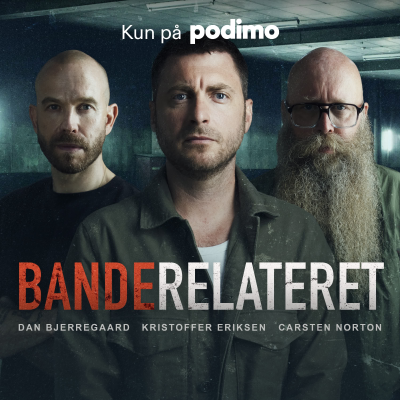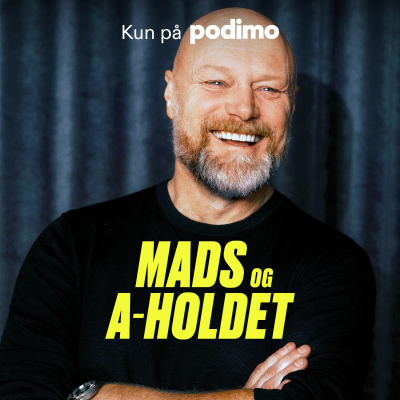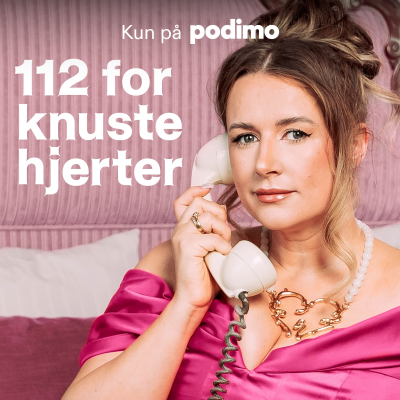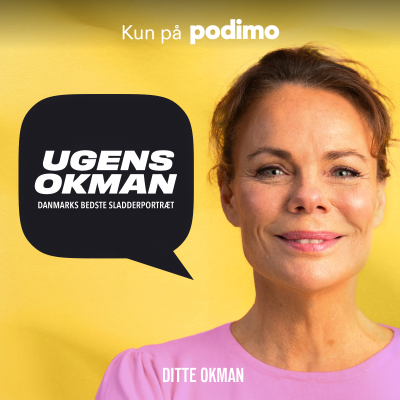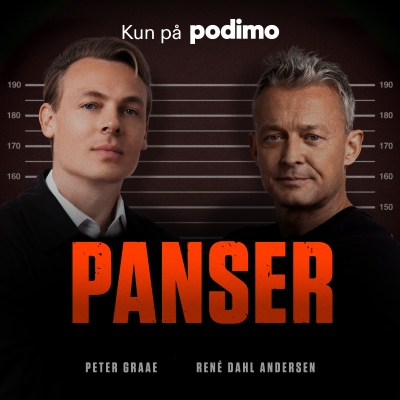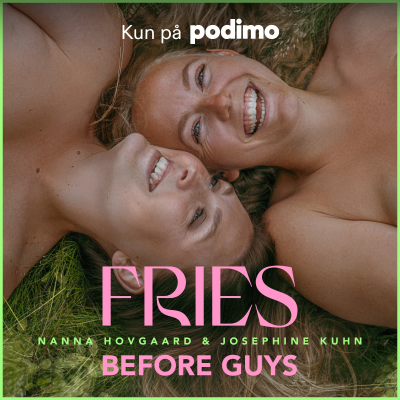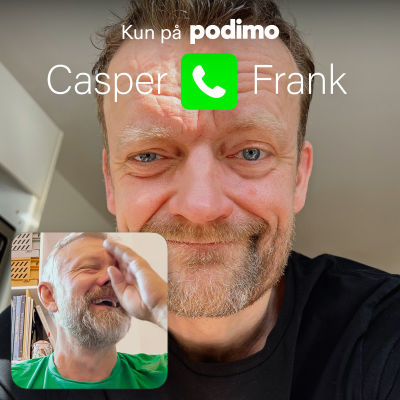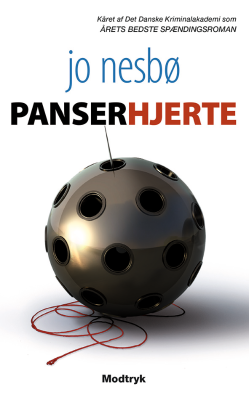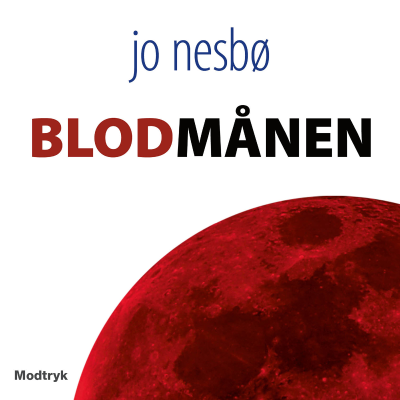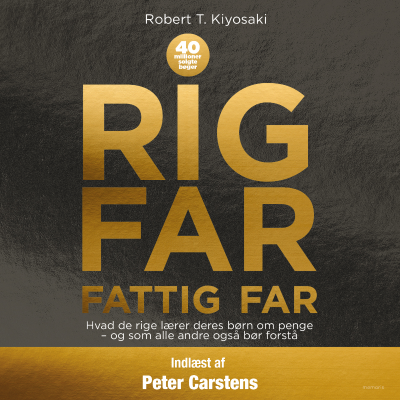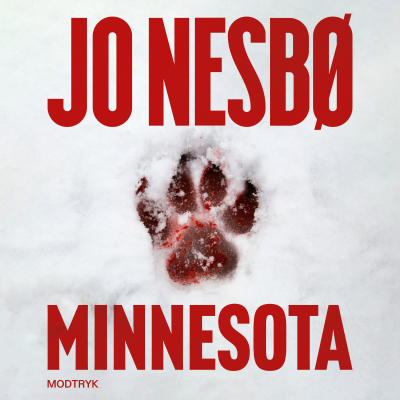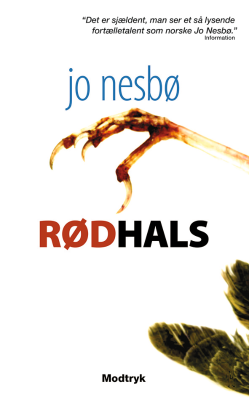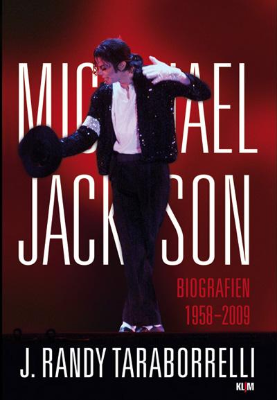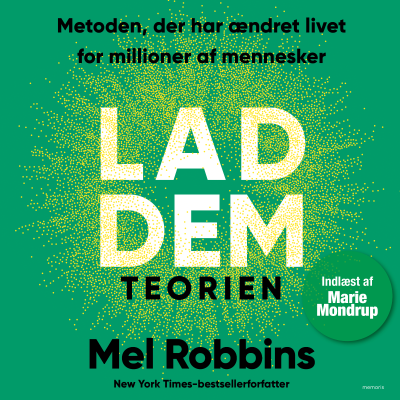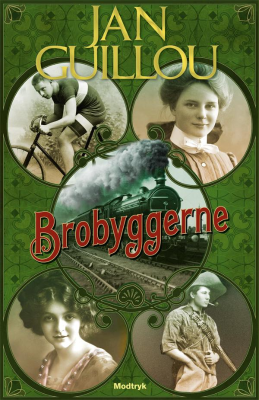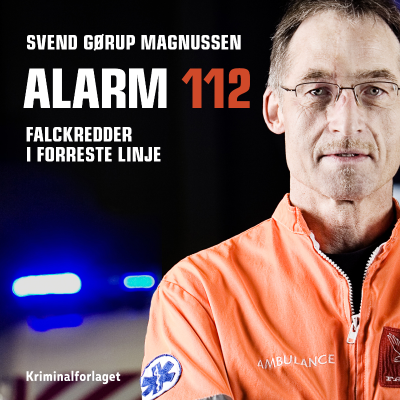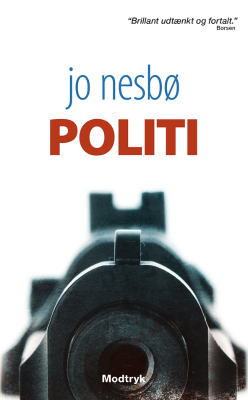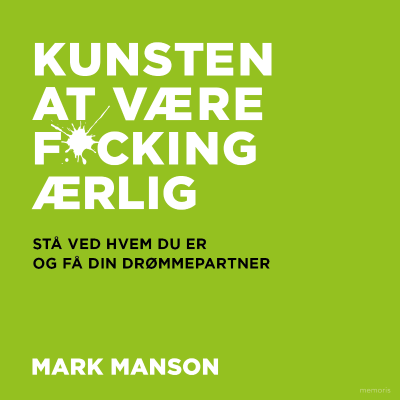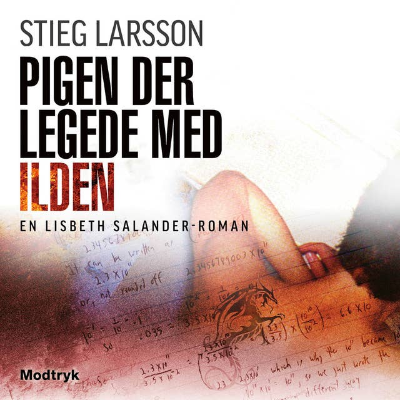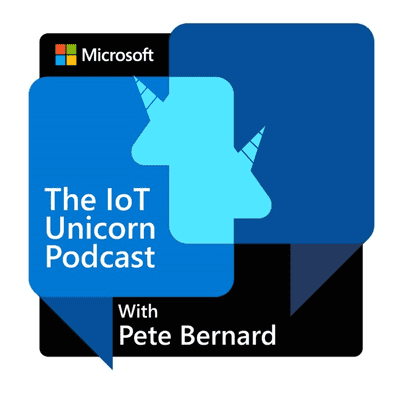
The IoT Unicorn Podcast with Pete Bernard
engelsk
Videnskab & teknologi
Begrænset tilbud
1 måned kun 9 kr.
Derefter 99 kr. / månedOpsig når som helst.
- 20 lydbogstimer pr. måned
- Podcasts kun på Podimo
- Gratis podcasts
Læs mere The IoT Unicorn Podcast with Pete Bernard
As IoT continues to shape our lives in a world that is transforming – often in ways we don’t even realize – Pete Bernard from Microsoft takes listeners on a journey through the world of IoT thought leaders to explore their vision of the future and what IoT will do to shape it. Listen in to the IoT Unicorn podcast series as he explores how their individual journeys were moulded by technology and get answers to how they’re currently using IoT, what motivates them to create, and their perspective on how the world should think about IoT.
Alle episoder
18 episoderLoRa, entrepreneurship, and there's something about IOT and the Netherlands with Wienke Giezeman of the Things Network
In this episode of The IoT Unicorn podcast, Wienke Giezeman, CEO & Co-founder of The Things Network, discusses his work with LoRaWAN and IoT solutions across the globe.
Going Carbon Neutral Using Azure IoT with Remco Ploeg of Altius
In this episode of The IoT Unicorn Podcast, Remco Ploeg of Altius discusses the challenges and opportunities of creating carbon neutral homes powered by Azure. Download Transcript Here [https://traffic.libsyn.com/secure/theiotunicorn/IoT_Unicorn_Transcripts_-__Remco.docx] Episode: 00:00 Pete: Welcome to the IoT unicorn podcast. This is Pete Bernard from Microsoft. And this podcast is for anyone interested in the long-term technology trends in the IoT space and the journey from here to there. So let's get started. Thank you, Remco, I appreciate your time. Thanks for joining us here. So you're actually based in the Netherlands, and I'm here in Bellevue, Washington, and through the magic of... I'm actually using the Squadcast platform right now to connect and record this, but... Welcome to the IoT Unicorn. 00:16 Remco: Thank you, Pete, for having me. 00:18 Pete: Great, so you're based in the Netherlands, and I've been there a bunch of times. I used to go there actually, when I would go to Barcelona for NWC, there was always like a flight at the crack of dawn from Barcelona, and I would transfer in the Netherlands to get back to Seattle. And then one year, I kinda got smart and I said, you know, I'm gonna go to Amsterdam the night before, get a good night's sleep, and then I'll take the 10 AM Direct to Seattle. So I've spent a bunch of those kind of layover nights in Amsterdam, so it's an awesome, awesome place, but... Are you from there originally? 00:52 Remco: Yes, I'm from Rotterdam, so that's the other big city in the Netherlands so that's south of Amsterdam. 00:58 Pete: I see. 01:00 Remco: And I was a lot I think also on the same plane as yourself, so I had to do a lot... To Seattle with the direct flight in the morning. So... And also coming back with the flight early in the morning in Amsterdam again. 01:12 Pete: Yeah, yeah. 01:14 Remco: So I'm based at the moment in Utrecht, in the middle of the country. 01:18 Pete: Okay. So you've been at Altius for about a year or two, a couple of years? 01:25 Remco: Yeah, a little bit, a little bit more than a year. And the beginning of this year, there was an acquisition of Altius by Avanade... 01:34 Pete: Yes. 01:34 Remco: So, I'm joining formally Avanade from the first of January, the coming year 2021. But already, I think for 6 months, I'm working side by side with my Avanade colleagues. 01:45 Pete: And so I know you've been... I know another thing, I did a little research is you were... Altius was named Microsoft's AI Partner of the Year, so that's a big deal. So tell me more about that. What is Altius in AI? What is the... Do you consider Altius an AI company or more of an IoT company that's using AI or how would you describe it? 02:08 Remco: Yeah, so if you look at Altius, we are at the moment, with 400 people in the UK, Netherlands, and India. We've got a full focus on data and AI, so that's also our focus. So IoT is more or less, no side-job but we saw that... 02:21 Pete: A means to an end. 02:23 Remco: A means to an end, exactly. And then started when I joined Altius so that's one and a half years ago with also combining AI with IoT, 'cause I think that that's a great combination that we have there. 02:36 Pete: Yeah, for sure. A lot of times that we've had folks from Qualcomm and other... More telecom-related, I think we had BT on here recently, and it was like the 5G plus AI plus IoT or pick your network that certainly becomes kind of a game-changer for what you can do with a little bit of data, over a large number of sensors or a lot of data... [02:58] ____. 02:58 Remco: I think, already at the moment, even without 5G, 5G is of course already rolling out, we can already do a lot with IoT. 03:11 Pete: Yeah, so actually interesting on that topic. You talk about IoT, so how much do you think with AI and IoT are you seeing on the Cloud versus the Edge, and how much experience are you getting now, are you seeing in a more of an emergence of Edge AI in addition to the cloud AI or what are you seeing there? 03:31 Remco: Yeah, that's a good question. I don't know, 10 years ago, we were moving everything to the clouds, but now we see some of our clouds going back again, so I do a lot of projects around connected buildings. I think that's a great example with Edge computing, is the amount of sensors, especially in new buildings and smart buildings, it's so enormous that moving every data point to the cloud, it's sometimes technical, not possible, and the second, it's too expensive. 04:00 Pete: Right. 04:01 Remco: So we see there are movement back putting Edge devices in the building itself again, and also doing AI on the Edge device itself because of course what you don't want to do in a building is controlling lights in the cloud, for example, you want to control locally, if the internet connection is out there you want to still put on your lights on. And since a couple of years, we are also doing AI on the Edge and AI on the cloud, of course already a little bit longer, and we are controlling, for example, Edge Tech Systems with AI depending on the expected usage of the building and certain conditions. We put certain settings into the building when running those... Yeah, AI is now on Edge device that help us and our clients a lot to control those devices. 04:54 Pete: Yeah, also I had understood talking to some other customers too about Edge AI, especially in AI Vision, it's something where you want to actually process locally, just from a privacy perspective too. I mean there's a transport, obviously, you can't keep streams of data going up into Azure and doing live video analytics, I guess you could and some people do, but for a lot of maybe smaller implementations or other implementations, you wanna kinda do things locally, act locally and then keep the data on-prem basically, right? 05:24 Remco: Yeah, exactly. So we felt also again the smart, to smart build solutions, things like security with cameras, where we can analyze the data off the camera, to see, okay, is somebody trying to breach into the building or do something else. And we all use Edge AI for it. 05:42 Pete: Right, yeah, yeah, that's fantastic. Tell me a little bit, I heard about some of the carbon-neutral housing efforts that you were doing, so tell me more about that. That sounds intriguing. 05:54 Remco: Yeah. So for one of our clients in the Netherlands, it's a company called TBI, and it's a local company with around six or seven [06:02] ____, and one of their main goals is to be the most sustainable builder in the Netherlands, and for that they are building carbon-neutral houses. So that means that the houses are totally carbon-neutral from a building perspective, but also from a usage perspective. So the people that are going to live in that home, on normal conditions, don't need to pay any energy bill every year, so they are really zero... We call it zero-net houses in the Netherlands but carbon-neutral is a better naming for that. 06:35 Pete: So, they're generating power on-site as well, so they're generating their own power... 06:39 Remco: Exactly. 06:39 Pete: And then also all the building is smart enough and efficient enough where it's only consuming the power that's generated on-site. Is that basically? 06:47 Remco: Exactly, so they put solar panels on it to be extracted data from the solar panels. We've got all kind of meters in the home, smart meters, smart edge meters, all kind of temperature, humidity, CO2 sensors in the home. We extract all the data into the clouds, to do the analytics and to prove that the house is also carbon neutral. 07:07 Pete: And so do those exist? [chuckle] It seems like... That's a tough one, isn't it? I guess it depends on the size of your house and what you're doing in your house, but is that feasible? 07:17 Remco: Yeah. So in the Netherlands, we don't have big houses like in the US. 07:20 Pete: Right, right. No McMansions. 07:23 Remco: So it's more, yeah, so it's more [07:26] ____ houses. And yeah, we have around, also normal houses, and I think 120, 130 meters, square meters, so that's not huge. 07:36 Pete: No, no. The square footage of the house also limits maybe the amount of energy you can create, right? You've got limited space for solar panels. 07:41 Remco: Exactly, exactly. Yeah, yeah. Yeah, exactly. Yeah, yeah, yeah. And one of the other things that is of course very important is, of course, the energy with the solar panels. Second of all, of course, if in the winter, for example, if the homeowner put the window open, the whole day, that house will never be carbon neutral because heating will... 08:05 Pete: Yeah. 08:05 Remco: Go the whole day and all night. 08:07 Pete: Can't solve for bad behaviour. 08:08 Pete: And that's why we need to... [laughter] 08:10 Remco: Exactly, yeah. So we also try to help the homeowner to get insight in that usage and that energy. 08:18 Pete: I see. 08:18 Remco: To reduce energy. 08:20 Pete: Is the power generated primarily through solar or is there any kind of wind or other geothermal or... 08:25 Remco: No, at the moment, in the houses, it's really solar panels and of course the extra energy that they bring into the home is from green energy. So in the Netherlands, most of the homes use green energy. 08:37 Pete: Ah, see, I see. 08:39 Remco: Or other solar panels... 08:39 Pete: So they're getting a power feed from the grid, from the government grid, that's green energy, that's probably wind-powered, right? And then they're augmenting that with local solar, and then the energy they're consuming... 08:50 Remco: Exactly. 08:50 Pete: Is kind of net neutral, I guess. 08:53 Remco: Net neutral, yeah. Exactly. 08:55 Pete: Fantastic. 08:56 Remco: Yeah. Because in the winter, of course, you don't have enough sun. We don't have enough sun in the Netherlands. 09:00 Pete: Right. Same here, I mean you know... 09:01 Remco: At the end of winter [09:02] ____. 09:02 Pete: Yeah, Northwest, we don't have... There's no sun here. [laughter] 09:06 Remco: No. A lot of rain. 09:08 Pete: Interesting, wow. So has that solution been deployed then? I mean, your solution with... 09:13 Remco: Yeah. We have now around, I think 700 houses deployed. 09:18 Pete: Wow, fantastic. 09:19 Remco: And depending of the speed, of course, of building extra houses will be added every month. Something like that. 09:25 Pete: So basically what you're doing is you're instrumenting. 'Cause I know in the US and maybe in the Netherlands too, there are ways to instrument your patch panel, your incoming electrical panel, to look at loads on a per circuit basis. And then what you're doing is then you're doing that kind of analysis, you're doing the HVAC kind of heating cooling analysis. Are you doing anything about the appliances themselves in the house? Are there appliances that are kind of determining being smart about their energy usage or is that all just happening sort of asynchronously from the rest of the system? 09:58 Remco: Yeah, so we put some, let's call them Smart Energy power adaptors in the home... To see, okay, the refrigerator, how much energy is that costing, etcetera, etcetera. So we're also getting that data. In the future, there are plans to also put in a small panel in the home to give direct feedback to the... To the homeowner itself. So at the moment, it's more or less... It's more information behind for the homeowners, so they can watch later on how the house is performing. TBI can see it directly, but the homeowner sees it later. So they want to bring that information already directly in the home, so the homeowner can react on it directly. 10:44 Pete: Right, right. So you're measuring current draw from different outlets, for lack of a better term, right? It's... Giving them a heads-up and... 10:52 Remco: Yeah. 10:53 Pete: But in the future, then hopefully these things that are plugged into the wall will get smarter and smarter about... Everyone needs to sort of get a message to sort of go into a low power mode because somebody's running the dryer maybe... I don't know. Like is there intra-appliance communication going on here, or is it just sort of every appliance for themselves? 11:14 Remco: Yeah, we see that already with load balancing. So in the Netherlands, we've got a big amount of electric cars that we are charging at home. And so we've got a lot of solutions also in this case with load balancing. So depending on the usage of the home, the car will load more or less energy. So I expect much more solutions also in the more smaller devices that can do more or less the load balancing and talking to each other what's happening. 11:47 Pete: Yeah, exactly. I think that's kind of key. We actually just installed a level two charger here in the US, 'cause we have a Chevy Bolt, our newest car. It's great, and you know the 110-volt charge here, that doesn't really... That only works for emergencies. It takes like an hour to get five miles of charge, so the level two we had installed and run off a 40-amp breaker in the panel and... Yeah, I could see that the inter sort of communication between devices, that will be sort of maybe the next step. 12:16 Remco: Yeah, we see that already here sometimes with more [12:19] ____ systems that try to connect all the kind of devices to each other. But that's still, in my opinion, more for tech guys like us, because it doesn't work always, and... You need some pack of expertise. 12:33 Pete: And a bunch of logos on the box, it's supposed to work with the other thing, it never does. So, yeah, been there. [laughter] 12:38 Remco: Exactly, yeah. It never does. 12:39 Pete: So what are you using Azure for in this case? I'm curious. What are your... There's obvious things, I can name them, but I'm just curious. How are you leveraging Azure in this particular solution? 12:50 Remco: Yeah. So in the start, we've built our own device, our hardware partner did that in the home. And the device is managed by the Azure IT app, where we get the data from the device into that. But we can also control the device now. So it's... 13:05 Pete: And is that sort of a monitoring device that's kind of like a power monitoring? 13:09 Remco: No, it's more, let's call it a gateway. I think that's the best naming convention for this device. So it's really the center of the device in the home. It'll extract the data from the solar panels, from the heating, from... 13:22 Pete: Okay. Right, right, right. 13:23 Remco: Etcetera, etcetera. And the data is directly feed into the systems. Of course, we've got also some devices that we cannot connect in the home itself, and we extract the data from APIs of those suppliers. 13:36 Pete: Right, right. 13:37 Remco: Those are more or less the two options for data ingestion into the platform. 13:40 Pete: Okay. 13:43 Remco: We're using Azure Digital Twins version two to make a replication of the home itself, so we get data from Outerdesk. Outerdesk is a piece of software where they design the homes with, the data from the Outerdesk we import into Outerdesk... Into the... Sorry, Azure Digital Twins. And we combine that data with the sensor data in the home. And that combination reflects into a digital twin of every home of TBI. 14:10 Pete: Wow. That's cool. 14:10 Remco: And next the data flow into the digital twin, we analyze the data with applications like Timeshare with Insights, where we can do simple Timeshare risk analytics. And of course, this data is all time-based data, solar data, panel data, with consumption and data, and energy data, etcetera, etcetera, so that they can do the fast analytics by themselves. And the other one is we use Azure Stream Analytics, where we can analyze the data for anomaly detection. So we know, for example, one of the biggest dealings with TBIS, it's a really simple one but it's water pressure. So in older homes in the Netherlands, we've got gas boilers, or sometimes electric boilers, and they need a certain water pressure in them. If you don't have enough water pressure, you cannot shower, and you don't have heat. And it's an easy solution because you just put extra water into the boiler system and it works. 15:15 Pete: Right. 15:16 Remco: But yeah, if you are in the morning, and you want to go to the shower and it doesn't work, most people will call, in distress, TBI... And say, "Okay, my boiler doesn't work." So then the mechanic will go to the house and fix the problem, and it gets quite expensive. 15:30 Pete: Right, they're very expensive. So you have... So there's sensors for water pressure in the pipes? Is that... 15:36 Remco: Yeah, no, it's a sensor for water pressure in the boiler. 15:41 Pete: Down in the boiler. Okay. 15:44 Remco: So it's indirect in the pipe of course. And that data we get in, and we see a certain pattern that it's declining every time, and then, of course, we can... Or call the homeowner at first, so they're now calling the homeowner, and ask them "Can you fill it by yourself?" And if not, they will come to you and fill it for you of course. But yeah, it's more... Let's say proactive maintenance. Instead of predictive maintenance, it's more proactive. 16:07 Pete: Right. 16:09 Remco: So that's one of the options they are doing. We're using Azure Machine Learning, also how to calculate optimized boiler temperature, to reduce energy in your boiler systems you can set a certain boiler temperature. And of course, how high the boiler temperature, or how more energy you will consume and you need to find per home the optimized boiler temperature, so we use machine learning for that, Azure Machine Learning. And of course, we use Power BI to present all the data to the stakeholders of TBI. 16:44 Pete: Wow, that's cool. So you're getting your money's worth then, on Azure. [chuckle] 16:48 Remco: Yeah, sorry, yeah. 16:50 Pete: That's cool. Are you doing any Edge AI, speaking of Edge AI, on the gateway itself, or is it really more of a data collector sender? 16:58 Remco: Yeah, so at the moment, it's really in Data Collector and of course we can send commons back. Based on this platform, we are also building out now also for the same customer a connected buildings platform, so same architecture but different use case, and therefore we use Edge devices of course. 17:16 Pete: Yeah, I can imagine. Actually, I had someone from RXR realty on the show about a month ago, I don't know if you've heard that one, but that was interesting 'cause they're focused more on the commercial... They're one of the largest real estate companies in New York City. And so they focus on commercial real estate, and in fact, they're using Azure for a lot of work, safe at work scenarios around social distancing, and mask-wearing, and occupancy, and other things. So I can imagine once you move into a commercial space, there's obviously the energy usage and the efficiency, which you guys are focusing on here for the personal home, but then there's all these other scenarios, and when you get into smart buildings, obviously that's kind of a whole lot more complex. 18:01 Remco: Yep. Yeah, and the other issue where, of course, we checked if we could do something with Edge devices, especially from a machinery perspective in the future that can be in a good solution, but if you look at the moment for the pricing model, between Edge device and then [18:18] ____ device, it's more or less almost 50% cheaper to put you and then, yeah, [18:23] ____ more stupid device in the home. 18:24 Pete: Yeah, no, that's true. That's true. 18:27 Remco: Yeah, and it's getting better also. On the simple devices, you can also already do some simple machine learning or smart analytics stuff, as a Microsoft... They put also a lot of energy, and with Edge [18:43] ____, for example, that can do really simple machine learning on a really simple device... You have a lot of CPU power. 18:52 Pete: So if your had your wish list of, "I really wish this technology existed to help me with these solutions, and it doesn't exist yet," is there anything that's kind of top of mind for you that you could snap your fingers and say, "Kinda wish we had that." 19:05 Remco: That is a really good question. Yeah, so for this use case is more or less for the device in the home. So as TBI, to get a bit of hardware power, maybe build some... Piece of hardware. And it's of course school, and I like that, but if you... As a construction company, do you want also to be in a hardware builder of those devices in the home? So I'm looking forward also, if you look at Microsoft, and what they are doing with things like Surface Laptops, etcetera, will they come ever with a cheap, really good more and less Edge or [19:47] ____ Autos device, Microsoft branded working really good... That's one of the things that... 19:53 Pete: I see. So sort of a Microsoft Edge AI sort of platform or something that... 20:01 Remco: And of course, yeah, there are some... Yeah, so there are, of course, already some development kits for that... With the fusion Kit and, etcetera, but that is more or less for the, yeah... For playing around with AI... It's really cool device. But from a production perspective, you need of course something else. 20:18 Pete: Interesting. Yeah, no, that would be good. That would be good. I think there's a lot of... Just a lot of work ahead of us in terms of... When you talked about Edge AI and just a lot of the things that Altius is doing is certainly on the cutting edge. You said you have about 700 homes, so obviously lots more to go with that. Do you know of any other overseas... I'm wondering if there's any equivalent sort of efforts going on in the US. I know that there's a lot around efficiency, but not necessarily around marrying efficiency with the kind of intelligence... I don't know if there's anything else. 20:52 Remco: No, we see in Europe a good interest now in this solution. We also try to more resell this solution. They say it's Avanade's. And of course, you can use the same concept in a building. I think in the US also, to save energy in a big building, you can save a lot of money. 21:14 Pete: Sure, sure. 21:15 Remco: I think these guys can also help with that. 21:20 Pete: Yeah, yeah, for sure. Fantastic. How's the pandemic been affecting your business over the past... I guess... Year, almost, God forbid. 21:30 Remco: Yeah. I have to say, in the Netherlands, it's quite good. So they are still building houses. There's a big need for houses in the Netherlands, especially cheaper houses. So we see a lot of attention, and I think if you look at the pandemic and data and AI, I think companies need more and more data and AI also during pandemic and also afterwards. From that perspective, I see a good future around this topic. If you look at IoT, a lot of companies are now investing... Okay, how can I do the same without the people, and IoT, of course, can help with that, with more automatic... Think about connect the factories. 22:16 Pete: I think actually it's interesting... 22:18 Remco: [22:19] ____ etcetera, etcetera. 22:19 Pete: One of the things I've heard in a constant theme is the pandemic, obviously, it's been pretty horrific, but the... We are getting a lot more data-savvy as a population, we're learning to understand data, and the importance of data and data can mean life and death in many cases, so just the sort of data savviness of the population, it's a positive thing and like you said, I think people are trying to just now use technology to be safer, to be more efficient, remote and automated. That's kind of fast-forwarded a lot of investment in technology over the past nine months or so. And I guess part of it is doing more with less, in many cases. We're trying to be more efficient and more effective. I think once we can get the pandemic under control, we get the... Climate change comes back into the front page, as you would say, and so the work that you guys are doing in terms of really being smart with energy, energy is such a finite resource and... Although I guess it's infinite, if you consider like the sun and the solar system, but anyway... 23:28 Remco: And the wind. 23:29 Pete: And the wind. I guess it's infinite. No. But that's kind of the next thing is we need to get smart and take some of the technology investments we've made and really apply them into our everyday life and... Yeah, yeah, 20, 30 years from now, this will just be commonplace, not having this kind of smarts in your home, in your building and not having a renewable energy, not being carbon-neutral itself will probably seem very odd a decade from now. 23:58 Remco: If you look at the IoT... IoT is already... They're frightened about... 20 or 25 years... 24:03 Pete: Yes, yes. We had that discussion the other day. I've been involved in it for that long. We used to call it embedded systems, and now it's called IoT. Now, but actually now they're gonna change it, it's gonna be called Edge, so Edge computing is now the cool... Even cooler than IoT. [chuckle] Get ready for another name change, but... Yeah, no, it's fascinating. Well, it's great, I really appreciate you taking the time and explaining what you guys are doing. Any kind of closing thoughts or other things you wanna communicate out to the audience around where this stuff is heading. 24:40 Remco: Yeah, I think what you just mentioned, if you look at sustainability of the epidemic, I think that should be one of the main topics for us in the world, and I think IoT can really help with that, creating that achievement with sustainability. And of course, in your home, it's all small what you're doing, but if everybody's doing it, it's really big for the world. 25:03 Pete: Right, right. 25:05 Remco: So we should use these kind of technologies in our homes, and our buildings. That will really help a lot saving energy and reducing a lot of, yeah, bad air, in the air, in the world. 25:18 Remco: Yeah, you know, I hear you. I think there's a phrase, I think it's like, "I can't solve the problems of the world by myself but I can solve the problems that are here locally, on the ground that I stand". And I guess if everyone is doing that and you kind of using technology in the right way to be sustainable, then it does add up. That's gonna be an important one. Perfect. Great, well, Remco, I really appreciate the time. It's been nice meeting you and I appreciate all the support of the Microsoft community, and hopefully our paths will physically cross at some point, maybe some future Mobile World Congress, I don't know, Barcelona or Netherlands or something in the future. 25:58 Remco: Or maybe on the airport of Amsterdam, man. 26:00 Pete: Yeah, I'm sure. I'm sure we've actually probably passed each other in the airport at some point. 26:03 Remco: Exactly, yeah. 26:04 Pete: Cool, alright. Appreciate... 26:05 Remco: Nice to meet you, Pete. 26:06 Pete: Thanks, Remco. Take care. 26:07 Remco: Thank you. 26:07 Pete: Bye-bye.
Technology Leadership, Seagull Management, and the story of Project Pink with Robbie Bach
In this episode of The IoT Unicorn Podcast, independent civic engineer and former Chief Xbox Officer at Microsoft, Robbie Bach, discusses teamwork and leadership in the tech space. Download Transcript Here [https://traffic.libsyn.com/secure/theiotunicorn/IoT_Unicorn_Transcripts_-_Robbie_Bach_.docx] 00:00 Pete Bernard: Welcome to the IoT unicorn podcast. This is Pete Bernard from Microsoft. And this podcast is for anyone interested in the long-term technology trends in the IoT space and the journey from here to there. So let's get started. [music] 00:23 PB: On this episode of the IoT unicorn, I chat with Robbie Bach, former Microsoft executive. He was there for about 22 years, he was the chief Xbox officer and drove that program for a long, long time. We talk about Xbox, Xbox Revisited the new book he wrote, we also talk about some other projects like Zoom and Microsoft Kin or what we call Project Pink, and just in general leadership principles and techniques for leading through ambiguity with a ton of technology, especially in the IoT space. So great Robbie, thanks a lot for taking the time to join us here on the IoT unicorn. First off, kind of disclaimer, the topics typically are IoT-oriented, [chuckle] but we're gonna take a little diversion today, but I think it's still gonna be germane and... So anyway, I just wanted to thank you for taking the time to join us. 01:20 Robbie Bach: Happy to do it. 01:22 PB: Good, good. I don't know if there's a phone ringing there or something... 01:24 RB: Yeah, that's mine. [chuckle] We can start over if you like, that's a phone that I have no control over, it's actually the house phone ringing in my office. 01:34 PB: Oh, okay. That's alright. Don't worry about it we'll... It's part of a sincere authentic nature of the conversation, [chuckle] but I think one of the things... And I read your book, Xbox Revisited, which is cool, and I thought for today, one of the things that I thought was really germane was just talking about technology and leadership, or just leadership in general, and it was really fascinating to kinda read through your journey with leadership and the pluses and minuses and what you've learned about it. And I think in the IoT space, we're sort of like awash in technology. Before we started recording, I was explaining how I was futzing with my system and just too many pieces of tech, and a lot of companies, they have a tons of technology, there's no shortage, now we got 5G and LPWA and all these AI. But how do you take that ambiguous technologies swamp and actually provide some kind of leadership and guidance and structure or framework around thinking about things, so you can get things done and you can get organizations, especially big organizations, you can imagine, moving in the right direction. And I thought there was a lot in your book around Xbox Revisited that resonated with probably what a lot of companies are thinking about today, is like how do we navigate through some of the tech? 03:01 RB: The thing I always respond... I talk a lot about innovation, and I talk somewhat about that in Xbox Revisited, but I do a lot of it in the public speaking I do. And I talk about creativity and how do you come up with new ideas, and technology ends up being third on my list of things not first. And the things that come first are ironically, business model, because it turns out a huge portion of innovation actually happens in business models, and the second thing is experience and sort of how people interact with the technology, and then comes technology. And when something is technically lead, maybe it has a good sustainable business model and maybe it has a good experience, but maybe it doesn't, and that's why the first person to market with the technology doesn't always win. And my experience has been that a sustainable business with a great customer experience will beat somebody who has a great technology without a good experience, and so we tend to focus on those first two, first. 04:14 PB: Yeah, so when you... Probably you were going through this with the Xbox, was like, talking about the purpose, principles and priorities. I think I got that right? 04:27 RB: Yeah. 04:28 PB: So you manifested that with Xbox, are there other example you've seen where companies have been able to snap to a framework like that and get them moving in the right direction? 04:37 RB: Well, think about... One of the other companies I work with, is a company called Sonos, and they're really a great company, and they have amazing technology, they've got one of the best IP portfolios in the industry, they've done some very cool tech things, but they do not lead with technology, they absolutely don't. They lead with the experience, if you have somebody who has a Sonos system, they don't talk about the cool networking architecture that it has or how it makes sure to sync audio on a big TV screen and do surround sound easily. They talk about, "Oh God, it was so easy to set up and the music played and it sounded great." That's all experience-focused work. And it's super powerful, and they have their own business model which is fairly traditional, but when you think about somebody like Spotify and the access you get to the world's music and the experience you have in accessing that music, and they have a business model, which I think is challenging, but it's subscription-based, so that's been an innovation over the last 10 years or so, and those are the types of things people end up migrating to. And there are people in the world who have, there's higher-end sound systems than Sonos for sure, they love their sound quality, but if you wanna spend money, you can get higher-end sound systems, but they're hard to use, difficult to set up, and Sonos has this incredibly simple model and it just works. 06:13 PB: Yeah, one of the frameworks we've been using is the Jobs-To-Be-Done framework, I think you're familiar with that, but that's another way of really titrating down to what are the outcomes you want to accomplish, and then how do you get those jobs done? 06:26 RB: Well, in particular, if the jobs done reflect back on customer issues, to me, so much of what happens in the IoT space has to be, "Okay, what problem are we trying to solve? And if we're trying to solve a customer problem, okay, I get that." And so let's focus on solving the customer problem. Well, like turning on lights, not actually a customer problem, right? 06:54 PB: Right. [chuckle] 06:54 RB: Unless you wanna turn on the light. Now, if you say, "Oh, customers want controlled settings and they wanna make... " There's other issues with lighting that customers can relate to and wanna fix. Okay. Great, let's get after those. Customers knew how to set their heat, it turns out, but now solve some other issues around heating that were actually real customer problem. And so if the jobs done relate to customers, I'm all in. 07:22 PB: Right, right. Yeah, no it's true. At the end of the day, if you cannot solve a customer problem. I thought what actually was interesting in your book, they had a couple of things that caught my eye. First of all, I didn't realize you were a tennis player. 07:33 RB: Right. 07:34 PB: So, I'm a tennis player. 07:35 RB: Oh, cool. 07:36 PB: But you were in the top 50 in the US, so you'd probably kick my butt, but I thought that was cool. Are you still playing tennis by the way? 07:45 RB: I play a little bit of tennis, I don't play as much. I have a shoulder that has hit about 300 and too many serves. 07:53 PB: Okay. Yeah. That's a tough one. 07:54 RB: So I'm trying to avoid shoulder surgery. If I really wanted to keep playing competitively, I would have to have some work done. 08:00 PB: Yeah. Okay. Yeah, no, I was good. Actually, I got back into it, kind of a funny anecdote. I'd played for a long time back in the... When I was a kid, back in the '80s, and took a long time off and got back into it a few years ago and actually stepped on to the court at the pro club here. And I had my Donnay racket with me and the pro is like, "They went out of business like 10 years ago." So the first thing was, "You need to get your gear in shape." And so I learned a lot. But yeah, I play a few times a week, that was fun. That's good. 08:35 RB: I had the same experience I went to... I had some mid-size rackets, which were old and I went to upgrade them, which was fine, and then I went to go get them strung, and the guy asked me what tension I wanted them strung at and I was, "Oh, I don't know, 58 pounds." He said, "Well, is that for the horizontal strings or the vertical strings?" I was like, "Oh, well, that's a new idea." And, "Dude, what kind of strings do you want?" Oh, different for horizontal and vertical strings, I mean, these are all new ideas when you had a small face Donnay, none of that mattered. Now with these big surfaces. Again, the thing we're talking about, the technology, the solution you're solving is tennis players can keep the ball on the strings for a long time. And that would be a lot of control. 09:18 PB: I know. It's amazing I mean, how the sport's evolved, but like many things. The other thing that kinda popped out, I love this phrase, seagull management. Maybe you can talk a little bit about seagull management, that is something I will use over and over again, but can you give me like a... 09:35 RB: Yeah, look, I think there's lots of people who as leaders think their job is to dive in, evaluate something, poop on it and then leave, and so those are the seagulls. And in fact, as a manager, your job is actually quite different than that. Your job is to put a framework in place, to work with your employees to establish the set of priorities and things that they're gonna focus on, and they'll come back to you and say, "Hey, here's how it's going." And you'll give them ideas and thoughts on how to improve or make progress and answer questions, and, oh by the way, facilitate solutions where you can actually help. But the idea in your job is to sort of occasionally fly in and spot check their work, and then tell them they're doing the wrong thing. It's just not super helpful, and by the way, you have no context, you don't know what's going on, and it's the way a lot of... There's a lot of seagulls in the tech space. It's a problem. 10:46 PB: Yeah, definitely resonated for me. I think another thing that toward later in the book, is you take some of the lessons around Xbox and leadership into more of the civic area, which I guess is a super trimming it today, since it's the day before Election Day. 11:04 RB: That's right. 11:04 PB: But that's a whole other podcast, we won't get into it. About leadership, and I totally subscribe to this too, I think at Microsoft, just like other companies, leadership is not for just for people in power. Leadership is for everybody to sort of be a leader in their own space and about what they're passionate about. 11:23 RB: Well, look, I think whenever I address a room of people, let's say there's 50 people in the room, it's easy for me to say to everybody, "Look, there's 50 leaders in this room. Now, you each have a different leadership superpower, you each have a different leadership skill, and the question for you is, are you self-aware enough to understand what that leadership skill is? And are you capable then of figuring out how to apply it in the environment?" And you can be a leader by being part of the team, you think about a prototypical football team or a soccer team, and you'd say, "Okay, well, who's the leader?" Well, in particular, in football you'd say, "Well, maybe the quarterback." Maybe, but there's leaders who, amongst the wide receivers, there's leaders... The center is the leader of the offense of line, I think that's the middle line backer, sort of the quarterback and the defense, but the safety actually has to manage the secondary. Everybody has to play their role in those things. And so you're challenged regardless of what your role is on a team, is to find how your leadership superpower applies to what the people you're working with need to get done. And I think sometimes people think of themselves as being sort of, "Okay, I'm tagging along, I have a manager, he or she's gonna tell me what to do, and I just do it and keep going." And I don't subscribe to that at all. 12:48 PB: Right. Yeah. Yeah, I know. I've encountered folks like that and I've inherited diverse teams at Microsoft, and inevitably there's somebody that's been there and they've been turning the crank for 20 years on this thing, and I'm always... I remember talking to one person at Microsoft, he'd been there a long time, and I said, "So what level are you? And they were like, "I'm not quite sure." and I'm like, "Are you not even aware of where you're at here?" I mean, so disconnected. Now, interestingly, I worked with this person and within a couple of years, a couple of years of work, they got into a different role, they actually did get promoted, they started to sort of... But I think sometimes we get into this mode where we're just turning the crank. We kinda just lost touch with the fact that we have the ability to be leaders, even if you're an IC and you're doing this thing that seems like a small part of a bigger thing, but you can still be a leader. 13:44 RB: I get asked a lot of times from people, "So when should I do something new? When should I take a new job or leave a company or change organizations?" Or whatever it is. And two of the things that are key on my list of that are: A, are you learning? And B, you really enjoy working with the people around you? Both require real engagement, real awareness, you can't come in and mail it in if you're doing both of those things. And so to me... And then the third thing, which is maybe even more important than the first two in someways is, are you passionate about what you're doing? A combination of being passionate, learning, and enjoying the people you're working with, that defines a great job. And if you can't say yes to all three of those, or you can't say yes to at least two of them, you gotta be thinking, "Hmm, why am I here?" 14:37 PB: Yeah. I think most people that ask like, "Well, should I be doing something different?" They've probably already made up their mind that they should be doing something different, they're looking for some maybe external validation to make that leap. 14:48 RB: Yeah, maybe. Although, I will tell you there's a lot of people early in career, and I think this is a generational thing, I don't like to categorize people in certain generations, but younger workers today think about mobility and changing jobs more frequently than my generation did for sure. And they're trying to find this balance between recognizing that they need to learn and grow, and have some track record with, "Oh my gosh, there's an opportunity in some place else." And in the tech space right now, there's opportunities everywhere. And even in the midst of a recession and a pandemic, there's opportunities everywhere, and some people are constantly looking around, "Oh, am I missing something?" And then giving people the confidence to say, "Hey, if you're passionate, you like the people you work with, and your learning, switching job is not gonna be a big thing for you." If you're missing some of those things, well then, yeah, you should be looking at some of those other things. And so your job doesn't have like an expiration date. Your job should have a natural point in which it becomes time for you to do something. 16:00 PB: Yeah. Yeah. I hear you. My dad used to say, "Don't get comfortable." That was his advice. It's like once you start getting comfortable... 16:04 RB: Another Broadway, I get asked a lot, "Well, why did you leave Microsoft?" or "Do you miss it?" And my comment to people is, "Look, I loved... " I didn't love every day at Microsoft, I can't say that. I was there for 22 and a half, and I've had a bad day. But, I say probably I loved every week or month at Microsoft. And yet, I left at a time when I felt like I wasn't learning as much as I wanted to, I had some people issues, and I had other things that I was passionate about. And so I tell people, "I don't miss Microsoft. I've never looked back, I love the company." I think I got 110% out of the experience, but I kinda... I feel like I left at the right time and that could be different for everybody. 16:54 PB: So let me switch gears a little bit on you, so one of the things, and which we have an interesting connection on that I'd like to talk about. One of your experiences at Microsoft is... I was part of the Project Pink Group. 17:06 RB: Yeah. 17:06 PB: Remember that? 17:07 RB: I do. 17:08 PB: And in fact, I think I presented the pitch deck to you off of my laptop back in 2010 or something like that. We were with Ross and... 17:17 RB: You're gonna laugh, if you give me a chance, can I walk away from the screen for a second? 17:22 PB: Sure. Sure, go ahead. Okay. 17:24 RB: This look familiar? Holding up a kiln. 17:28 PB: Nice. Nice. Mint in Box. Mint in Box. 17:34 RB: [chuckle] I have both of them in my office, on my shelf. 17:39 PB: Awesome. Good to hear. Good to hear. Now, that was an experience when you talk about challenging experience, great people to work with, learn a lot of new things. So I am kinda rewinding a little bit back to that experience, what was, from your perspective, interestingly, I know what it was from my perspective, kind of going through that pro... I spent three years on the project. So cradle to grave literally, plug it in, to unplug it, [chuckle] but from your perspective, where did Project Pink fit in to all the stuff that was going on back then 'cause it was a little bit of a maelstrom. 18:14 RB: Yeah. Well I think Pink fit in in a couple of different ways. So Pink was really the first effort to create what, for lack of a better phrase, I'll call a Microsoft phone. And the idea was centered on a really good concept, which is, if you're gonna create these, given our podcast today, I'll call IoT devices, if you're gonna create these devices, they happen at the intersection of hardware and software and service. Those three things have to meld together in a seamless customer experience. And Microsoft, because we didn't do hardware, and we were just starting to do services, would provide software for those experiences and then hope they worked. And unfortunately, what we were discovering in multiple categories is that that wasn't working. The companies who would pick up our firmware or our operating system work or whatever, would inevitably screw it up in the integration with their software and service and produce mediocre devices. 19:13 RB: And our friends down at Cupertino, were getting really good at producing integrated devices that had really nice software, great hardware and a little less on the service at the time, but the service was provided by carriers, and so suddenly we're in this space where Windows Mobile and subsequently, Windows Phone is trying to find its way in the phone space, and the people who we're providing software to are producing mediocre phones. And it was one example, the first of an effort for us to do an integrated experience, and leveraging off some of the work we'd done with Xbox and a little bit, frankly, the work we did with Zune, while we produce integrated experiences. And I talk about Zune a lot, I talk about Pink less because it has less public visibility, but to talk about both of them as having many elements of success and then critical elements of failure, and you have to try to learn from that and then can continue to grow forward. 20:20 PB: Yeah, no, I thought actually too, it was a big service for you. At the time we were trying to do a cloud-powered phone basically, right? If you remember that, it was like a digital twin of the phone in the cloud, and all your stuff was there, and then the phone was just this kind of end point that connected to the cloud that reflected the state of your... From which should be connected to all these social services and whatever, so I love the idea, I mean the idea I feel like we're still executing on the deal with Azure to be honest with you, with digital twins and everything else. We were probably about 10 years ahead of the tech at the time, of course... 20:52 RB: I would say two things. And I think this is really important as you think about consumer and IoT, right? Timing is everything. And in a way, Pink was a project that was both before its time and after its time. When we spec-ed Pink in the beginning, it was timely, social media was catching on on phones, people were starting to use them more aggressively for the beginnings of photo sharing and video sharing and those kinds of things. Still mostly email and text messaging, but things were different. The market was probably the take-off for the pace. 21:35 PB: It like 2007, 2008. 21:36 RB: Unfortunately, for a lot of different reasons, Pink ended up being about 12-18 months late in terms of actually delivering a product to the market, and in that 12-18 months, the market moved. And suddenly you didn't want a special purpose social media device, suddenly every device needed to be a social media device and that left the niche market and that left Pink in a very small niche market, and so in essence, it was too late. Now to your point about replicating everything in the cloud, we were a little early, things... That was starting to happen, you couldn't even talk about the cloud in 2008, people didn't know what you were talking about, and then still timing with these IoT devices is a powerful thing and sort of evolving to match to where the market is, and you wanna be on the cutting edge, but not so far out that you get your head knocked off, and that's a tricky thing, and sometimes we've gotten it right, and sometimes we've gotten it wrong. 22:38 PB: Yeah, yeah. Well, it's like Nicholas Negroponte and Being Digital, it's an old book, I think it's from the '80s, maybe it's the '90s, but he said... One of his quotes was, "We tend to overestimate the impact of technology in the short run and underestimate it in the long run." So we get... We just totally imagine everything's gonna change tomorrow about this tech and of course it doesn't... 23:00 RB: Microsoft started it's auto initiative in 1990, so... 23:05 PB: Oh yeah, I used to drive a Ford Flex, by the way, and I have a V1. 23:09 RB: You think about, it's not that anybody miss out the opportunity. 23:16 PB: Yeah, no, I know that's... I guess getting back to leadership topic, how do we provide that leadership internally in our teams, and when you talk about the purpose, principles and priorities, actually, one of the interesting things there too, I wanted to talk about. I really love the part where you talked about leaving things undone, I actually just had a discussion with my team last week about, can we articulate things that we're not going to do? It was kind of an odd email because you always wanna talk about, "Oh, things are gonna get done," but let's be clear about what we're not doing, or I would say de-prioritizing, but maybe you can speak to that, and how important... 23:55 RB: Well, I think human nature is, do more. So if you ask somebody who works for you and say, "Hey, tell me your priorities." You'll inevitably get a list of between five and 10 things. That just sort of the human nature, and people will buy it themselves to more rather than less, that's just fact, but if somebody asks me for priorities, telling them I'm gonna do more must be better, right? And the truth is, the human capacity, our brains don't subdivide tasks that well, and so we only have the ability to do... I always pick five, but four or five things, well, at any given point in time, and even that I think requires real energy and real effort. And so the idea that somebody's gonna do seven things, I just go, "No, you're not going to. So tell me the two things you're gonna leave undone, tell me the two things you're just not gonna focus on, and tell me the five things... " 'Cause the problem is, if I give you seven and allow you to have seven, you'll try to do seven and maybe you'll do two or three pretty well. The rest all get done well unfortunately numbers one, two and three might be the ones that get undone, in the list, until... 25:08 PB: Yeah, exactly. 25:11 RB: And so just getting people to... And sometimes the best way to get people to prioritize is to get them to decide what they're not gonna do. And the experience I've had with people is when they do that, and they ultimately accept that it's okay, there's this giant sigh of relief. Thank God you took that off my plate. 25:33 PB: Yeah. Yeah [chuckle] 25:34 RB: Now, I actually have enough time to do what I know needs to be done. 25:39 PB: Xbox Revisited, so that's the book, I do encourage it, I did read it, it is really good. The other book, by the way, I have been reading, sort of interest versus, I guess you put this one down to read yours, but was the new Andrew Cuomo book, I don't know if you've seen that. 25:52 RB: I have not. 25:52 PB: But it's another... Yeah, and I picked it up. It was about his leadership lessons through this COVID crisis and yeah, and it's really fascinating 'cause he goes it day by day and imbues it with his leadership style and lessons learned and things. So I try to always go through a book, I'm always working on a book, and I went through a whole run of dystopian science fiction, which was a mistake 'cause it was very depressing and then I decide to lighten up, and now I'm looking at leadership books, 'cause that feels a little better right now at this point in time, but no, I really appreciated the book and I thought it was really insightful. So, is there any kind of, I guess, topics or thoughts that we have not gotten to yet that you would like to communicate? 26:41 RB: No, I think... Here's the one thing, when I think about IoT, so this won't be a leadership thing, this is an IoT-specific thing. When I think about IoT, I think a lot of people think about the grand unification of life, and they think somehow there's gonna be like a central nervous system for all IoT devices, and I'm gonna have a control panel that's gonna manage my IoT life. I fundamentally am not a believer in that. I am a believer in the fact that people think about systems in their life separately, and they think about their heating system as their heating system, and their music system as their music system, and their alarm system as their alarm system, and they don't think their home has a system. And so thinking about, again, when we come back to experience, thinking about how if you're experience lead, that's the way people experience. So I have... Yeah, it means I have a bunch of apps on my phone. I have a whole folder on my iPhone that's called The House, and it has a bunch of apps. 27:54 PB: Right. It's got like 30 apps in there. [chuckle] 27:55 RB: Yeah, I have a few less than that, but each of them are a little different. But, I know that Sonos is my music system and Nest manages my cameras and heat, and actually I have a Nest Stand where it goes it turns up, and it works. I have an app for automatic water shut off that detects leaks in our house, right? I don't need that to be integrated with anything else. And so I think there is in our tech minds, there's this, "Hey, let's unify because we can." And instead, we should think the way the human mind thinks, which is, "No, I have compartments. I have ways in which I think about things, let my tools think that way with me." And I would hope that the folks who have IoT in their future would think that. 28:49 PB: Yeah, no, and I think it goes back to the meeting customers where they're at, really thinking about what their problems are, what their experience is as a plant operator or healthcare worker and what they're trying to get done and making sure the tech fits into them, and so they don't have to fit into the tech. Cool. Well, Robbie, thanks a lot again for the time and appreciate the book and maybe I'll see you on a tennis court sometime. 29:16 RB: [chuckle] That's great, I appreciate you taking the time. 29:18 PB: Alright, thanks Robbie. Alright. 29:20 RB: Hey, cheers, take care. 29:21 PB: Bye-bye. [music] 29:22 PB: This is Pete Bernard, you've been listening to the IoT unicorn podcast, and thanks for joining us. Stay tuned for the next episode. And feel free to give us some feedback at the IoT unicorn at microsoft.com. Thank you. [music]
The Past, Present, and Future of 5G with Matt Chatterley and Tom Bennett of British Telecom
In this episode of The IoT Unicorn Podcast, Matt Chatterley and Tom Bennett of British Telecom discuss some of the benefits and challenges of implementing 5G. Download Transcript Here [https://traffic.libsyn.com/secure/theiotunicorn/IoT_Unicorn_Transcripts_-_Tom_Bennett_and_Matt_Chatterley_British_Telecom.pdf] 00:00 Pete Bernard: Welcome to the IoT Unicorn Podcast. This is Pete Bernard from Microsoft, and this podcast is for anyone interested in the long-term technology trends in the IoT space and the journey from here to there. So let's get started. [music] 00:21 PB: On this upcoming episode of the IoT Unicorn I have a great conversation with Tom Bennett and Matt Chatterley, both of British Telecom. And they explain to me what the term hospital pass means, we talk about some great British beer and all things 5G, past, present and future, and not just for iPhones. So please join us. 00:44 PB: Thanks, Tom and Matt, I'm gonna... This is actually an interesting milestone for us, this is the first time I've had two guests at once on the IoT Unicorn, and I think when I originally was thinking back about having you guys on the show... I've had lots of conversations with each of you individually, and also some really good conversations together and I thought, "Well, let's just get everybody on the horn here and talk about some things around 5G and stuff like that" so I appreciate you guys both making the time all the way from the UK to pipe in here and join us on the Unicorn, so thank you very much. 01:19 Tom Bennett: Thank you for the invite, yeah. 01:21 PB: Sure, sure. So maybe before we get into lots of acronyms and Telco stuff, well, maybe just give us a little bit of a back story. Maybe Tom and Matt about sort of... We're talking about BT, British Telecom, so that's quite a storied institution, and I know that you had worked at EE before that and stuff, maybe just give us a little bit of background about how did each of you get here to this point in time. [laughter] 01:47 TB: How far back are we allowed to go? 01:50 PB: Oh, you know. 01:50 TB: 25 years, maybe not. So yeah, I joined this thing called 2G, it was a small company that started, anyway, that was 25 years ago. Matt and I, we started a little bit of history of space to EE. So EE is the largest and best mobile operator in the UK and it was formed 10 years ago from the merger of what was then the third and fourth place operators, so it was Orange and T-Mobile. Now by forming that merger it created not just a company, but great assets, and in fact it is number one by customer number. It also had the opportunity to go on to be the best from a network perspective and we did that, we were... In fact, Matt and I started to meet yourself, Pete, was eight years ago when we launched 4G and we were a year, year and a half ahead of the competition in the UK. 02:44 PB: That's right. 02:44 TB: And the rest is history from there. We launched 4G first in the UK, launched our new brand, EE and the rollout was phenomenal. From there, we hit top 10 cities, and then right now, I think our 4G coverage is just pushing 85%, 86% of the geography of the country, not just people, geography of the country, and that's kind of phenomenal eight years after launch. In fact, our launch anniversary is this November. This first week in November we launched. And yeah, that's where we started and then obviously BT, which has no mobile assets, BT originally was just the fixed operator. I've looked at this new EE upstart with its phenomenal 4G network and said, "Yeah, we want some of that." And four years ago Matt? Four years ago they bought us. 03:39 Matt Chatterley: [03:39] ____. 03:41 TB: We all moved in to BT and really that was very much a both commercially strategic and technologically kind of architecturally strategic decision because... 03:52 PB: Wow, that's cool. Something happened. 03:53 TB: Because as you roll forward, I'm sure you know, really it's about running forward with the best 4G and now 5G network, and it's a converse plate, it's how you leverage both assets together for the fixed and mobile network, and that's a very, very, very brief snapshot of where we started as third and fourth place operator and now we work for the largest Telco in the UK. 04:15 PB: Right. And how long have you and Matt been working together? 04:18 MC: It's far too long... [laughter] 04:20 TB: Way too long, I mean we have counselling, it's a bit like a marriage. 04:24 PB: Good, good, with an HR benefit. 04:25 TB: [04:25] ____. [laughter] 04:27 MC: At the start of the JV, I was actually in Deutsche Telekom, working for DT International, and then they wanted someone to go into the JV and the Clean Team where if it didn't work out, you get six months pay not to work and then, unfortunately, it did work out. So I've had [04:40] ____. [laughter] 04:40 MC: Yeah, so I think we started right at the very beginning, didn't we Tom? 04:45 TB: Yeah, we did. 04:45 MC: When we figured out what the right approach would be to go to make devices work in this space, so yeah, we were right at the very start. 04:51 PB: I see. So, today what is your... For Tom and Matt, just for our customers, and our customers are our listener's edification, what is your current accountabilities or what are you guys working on? [laughter] Or not working on, I don't know. 05:06 TB: Yeah, exactly, we only work as much as we can. No. So I'm accountable for partnerships, external partnerships such as this with Microsoft and innovations, so I pick up anything from a innovation perspective, be that technology, service, solution. 05:21 PB: Okay cool. 05:22 MC: And I look after all things related to devices and identities, which is what we call SIM cards, but it's actually much more overreaching that, and then the partnership as well from a mobile perspective. So the team that we've got looks after pretty much... If it goes onto the network we've tested and approved it and made sure it works. 05:40 PB: Right. Right. Cool. Yeah, actually before we got into the official podcast here, I was mentioning to Tom about... I remember going to the Great British Beer Festival with Tom a few years ago. [laughter] Which was a lot of fun. That was pretty cool. That was serious beer culture going on, and I know they didn't have it this past year, but... 06:00 MC: There's some very bizarre beers there though. 06:02 TB: Hell yeah, there is. 06:03 PB: Yeah, wild stuff. I saw some controversy where they were gonna... This year, I think when they were gonna have it, they put out some sort of glass or something and it had Coronavirus little logos on it, and I think they got a lot of pushback on that... [laughter] 06:15 TB: Yeah, I can imagine they did. 06:17 PB: Way too soon, way too soon, but if you're gonna go to the UK, beer has gotta be part of the... Part of the experience. 06:23 TB: Oh absolutely. Yeah. Very, very much. Yeah. Beer's absolutely part of the culture here and it's a very big microbrewery ecosystem that this is... And to Matt's point far too many people you know had to brew beer and go "Oh, wonder what that tastes like?" [laughter] 06:42 MC: Let's throw this in there and then call it something crazy. 06:45 PB: That's right. That's right. Well, you know, it doesn't take much, but that's good. So let's talk about 5G a little bit, 'cause I know you guys were really on the front edge of a lot of 5G development and deployment in the UK. And I know that BT's made a lot of noise about the 5G deployments. Maybe can you share with us what surprised you about that or how is it going? What was the learnings from that early, early rollout of 5G? 07:18 TB: Yeah. Should I start with the network, Matt, and you can talk to the devices. 07:23 MC: Yeah, cool. 07:25 TB: So I suppose when we launched 4G, we were in a unique position. We had quite a significant amount of what was then 2G spectrum, so 1800Mhz, and that gave us a great opportunity because we could reuse the existing antennas. Basically what we didn't need to do is organize a crane, a lift crew and install brand-new equipment up the tower or on the rooftop. So our 4G rollout was phenomenally fast. 5G, we didn't have that luxury. Let's be frank. 5G, even though last year, what we launched was 5 GB radio so we haven't launched standalone yet. I thought that these are on the record. Last year was very much a 5G non-standalone, but that still comes with significant logistical challenges because it's a new spectrum band so it's 3.4, 3.5. And that requires brand new antennas. It requires new equipment in the base station and it required upgrade to the transmission to the site, so the backhaul for 10 gig in most cases. 08:32 TB: So, yeah, logistically a much slower rollout. You are talking about good old-fashioned concrete and steel rollout, and therefore that was probably one of the key challenges for us, was the sheer volume of change physically on a per-site basis. Whereas previously, as I said, with 4G, relatively simple. Not massively simple but relatively simple being you weren't changing the antenna. Now we're installing brand-new antennas. And then the complication that brings in terms of the integration and the assurance of the service, because now we're installing new software, new hardware, active antennas, active equipment at the base, and we've gotta get the 4G and the 5G working together for the best service experience. And that's the point at which traditionally I will come to that because as a customer what you care about is what's on the device. 09:24 MC: Yeah, and I think that's what we tried to focus on as well, was the it's all well and good what we do from a network point of view, but if the customer doesn't get a good experience on the device side, then it's irrelevant. And I think some of the things we were talking about earlier on, where I think 2G went from standards complete to devices launching in around three years. 09:43 TB: Yeah, it was. 09:44 MC: I remember being involved in 3G when I was a an [09:46] ____ operator, that was around 18 months, maybe a bit shorter or a bit longer but that sort of time period. 4G again we were quite fortunate from a network point of view, that it had been live in other countries beforehand, so there was quite a decent device base out there that we could use. 5G, we went from standard to complete to launching in crazy amounts. I think it was around three months in total, and even then we were shaving things off in the last minute about, "Let's do another base-band update and make sure this works." So, on the whole though, the launch has gone fine. We've had from a device point of view, the customer experience has been, been really good, and I think what we're seeing with 5G though, with the works and the [10:27] ____ our partners are doing, the ramp down in terms of price of equipment is much faster than 4G. We were targeting super low price of the 4G phones in probably 2014, 2015. We were already getting those from a 5G point of view now. So we really are going [10:44] ____. 10:44 PB: I noticed that. I think Qualcomm has been just working overtime, triple overtime to bring... 10:50 MC: We've both worked closely with them, yeah. 10:51 PB: Yeah, yeah, yeah. Exactly. It's hard to keep track of all... 10:54 MC: It is. I get confused. [10:54] ____. 10:57 PB: Yeah, Their 5G summit's going on this week too, I think... 11:00 TB: Yeah, it is. 11:01 PB: [11:01] ____ have registered for that. We actually have Jason Xander who is our EVP speaking at that. He's doing a walk-on, so he'll say some cool stuff on that but... Yeah, no, it's been... I think the whole ecosystem has been on overdrive around 5G, and as you mentioned before, it's like there is a lot of complexity there. You mentioned you're at 3.5, there's different frequencies that people are rolling out at. It gets a little confusing. Like in the US, we've got people at millimetre wave, some at telcos and some at like sub six, and some standalone or non-standalone, and depending on whether you have a Samsung or not, or blah, blah, blah. It's like super challenging. I think they're trying to make it simple for customers, consumers and businesses, but there's so many different ways to slice and dice the network in terms of what's virtualized and what's on-prem and all these other things, and it's gonna be... 11:51 MC: I think the important thing is you focus on what's the benefit to the customer. 11:54 TB: Yeah, exactly. 11:55 PB: Right. 11:55 MC: It's our job to hide all that stuff from them [11:58] ____ just works. 12:00 PB: Yeah, exactly. Yeah. I have a Samsung Note 20 ultra 5G. I don't know if I got that name right. It keeps going. It's a big long name, but whatever. It's the whole thing. Yeah, there you go. I got one of those things. 12:12 MC: [12:12] ____. 12:12 PB: Oh no. [12:13] ____ right. You guys can't see the video here, but he's [12:17] ____. [laughter] 12:18 PB: Very nice. Very nice. So my understanding was that in T-Mobile in the US, that's running on standalone 5G. 12:25 TB: Wow. Excellent. 12:27 PB: Yeah, that's kinda cool. And it's been great so far. It's a great phone. It's a nice upgrade. I had an S8 plus before that so... But you're right. But the other thing is like people think about 5G as... I had a little bit of a pushback this week. Apple introduced new iPhones and they have 5G, and 5G is great in phones. It's a faster connection. Who doesn't want a faster connection, right? 12:52 TB: Exactly. 12:53 PB: But one of the interesting things is so what does 5G do beyond phones, right? 'Cause everyone has a phone, okay we get it, and they're faster, okay. But the other thing is how are other things getting connected beyond just phones, and that's kind of... For me, and especially maybe the audience, it's called the IoT Unicorn, that's the name of the podcast, but things that get connected to the cloud over cellular to me is kind of like this incredible opportunity for folks to sort of can see that these scenarios that just weren't possible before. 13:25 MC: Yeah. And I think there's also a lot of hype around 5G being super fast speeds, and we spoke about this earlier on, but it's also low power, and I think that's where the big opportunities for us are. Because that you can in theory connect things that could last considerably longer than a smartphone would doing IoT type things. 13:44 PB: Right, right. Yeah, it's just more power-efficient. 13:46 MC: Yeah. 13:46 TB: Yeah. 13:47 PB: Yeah, which is good. Although, you know UK, unfortunately, is a little bit famous for folks like burning down 5G towers and stuff, I don't know what reason but... [laughter] I just... 13:56 TB: Yes. 13:58 PB: I thought the US was nuts, but you guys top... 14:01 TB: Unfortunately, that's one that's a bit of a homegrown madness. I mean I have seen some of that across some of the other towers. 14:08 PB: Yeah. 14:08 TB: Anglo states so, you know, Australia or New Zealand have had their own, but I don't think anywhere near as bad as unfortunately [14:14] ____. Yeah, exactly [14:20] ____ it'd be terrifying. I don't know how to put it very, very politely other than using quite harsh words about the intentions of some people. 14:32 PB: Yeah. 14:32 TB: I will say this much, it comes with significant cost. [14:39] ____ I have these two points to make, one is a very serious one which is when somebody burns down a mast, in all seriousness, that's the mast that often we share our masts with our [14:50] ____ one of the masts that was burned in Wales that covers three valleys and was the only mast in that area, so those three valleys and the people in those towns and villages they could not make [15:02] ____ until we rebuilt it. 15:04 PB: Yeah. 15:05 TB: So, it's not great, and unfortunately the, well, for want of a better phrase, morons involved here really aren't thinking that through. The other thing to note by the way is, unfortunately, we've had just over 100 incidents involving these towers, involving we've had more instances where engineers who, for instance, have been working on fibre have been threatened, and they're not even working on 5G. 15:29 PB: Yeah. 15:30 TB: And of those 100 towers, not one of them was 5G. 15:37 PB: Wow. 15:37 MC: That's the bad part. Yeah. 15:37 PB: Yeah, yeah. It's really... It's, yeah, it's really unfortunate. I mean we're at... In all seriousness, it is very unfortunate. We are at, you know, we're recording this actually about two weeks before the US Elections so we're almost at full tilt boogie here. [laughter] 15:50 PB: In terms of crazy, crazy town but... 15:54 TB: Yeah. 15:54 PB: I think this is going to be published like the day before election day. So, you know, hopefully yeah, cooler heads prevail and people, you know, kind of dial it all down a little bit and kinda think it through but 'cause it's not... It's just not productive for people to just go off and... 16:10 MC: No, and the impact done also. And if you... 16:13 PB: Yeah, of course. 16:14 MC: And again if we talk about IoT if you've got a bunch of sensors in a factory that's had the mast burnt down then so we need to, we need to look at how we secure this a bit more. 16:23 PB: Yeah, that's too bad. But yeah so getting back... 16:25 TB: There's an education piece to go with it as well. Sorry, go on Pete... 16:30 PB: Yeah sure. Yeah, for sure. And so just getting back to the IoT parts, so yeah, the... You mentioned about low power. I mean, 5G provides high density, low latency, in addition to high performance, low power, where are you guys seeing things heading in terms of interesting things connected over the 5G network beyond phones? [chuckle] 16:53 TB: Yeah, thanks for that, thanks for the... That's the hospital... Have you got the phrase hospital pass? Is that scanned across to America? 17:01 PB: I don't think we know what that means, what does that mean? 17:03 TB: Yeah, so the game rugby if you're familiar with it. 17:06 PB: Okay. 17:07 TB: It's obviously all about physical tackling much like American football. 17:09 PB: Okay. Got it. 17:10 TB: And a hospital pass is when you're being attacked by the enemy... The other side and you give the ball to your mate just as they [17:16] ____. 17:16 PB: Ah, I see. And that's a hospital pass. [laughter] 17:17 TB: Now so he gets the hospital pass. 17:19 PB: Good one. That's a good phrase. I'm gonna use it. [laughter] 17:23 TB: So, thanks for the hospital pass. [laughter] 17:27 TB: So, I think as you've already discussed, look, the consumer and having a faster iPhone, a faster smartphone, brilliant and you obviously see the growth in form factors as Matt ably demonstrated with an affordable phone. We do see a great in B2B and B2C as well, so businesses selling different services to consumer requiring that bandwidth, and requiring let's remember low-latency so an absolute requirement for information now, not necessarily in 10 to 20 seconds' time but you know 50 to 100 milliseconds' time. So, we're starting to see some interesting... Just testing the water. So, some services that are very, very distinctly kind of looking to integrate heavily between what would traditionally be an [18:12] ____ OTT play, actually they're starting to talk to us about, well, how could they guarantee the latency? And maybe isn't the fastest possible latency... I mean if you take the example of gaming and gamers that just want everything instantly in zero milliseconds. 18:25 PB: Sure, sure. 18:26 TB: But how could we guarantee a consistency of latency? 18:29 PB: Right, right. 18:30 TB: And then finally we are seeing a great deal of research, so we work as the department accountable for this, and government in the UK it's called DCMS and they're doing a lot of investment and we work hand-in-glove with them on some of the trials they're doing, and that covers everything from connecting it to factories, so B2B including drones as well, so there's an example drones. We're investigating how and where and when we can develop a drone use service and that's as a vertical, so that's not just us the telecoms operator, that's working with partners, working with who would be the new traffic control system for that, so on and so forth. So I think across consumer and across business to consumer, and then across business to business you're seeing a growth across all those areas and I say you're still at the... You've gone beyond technology experimentation. We're into commercial experimentation now. We're trying to work out what the right commercial models. 19:28 PB: Yeah, exactly, and also... 19:28 MC: And when you said... 19:30 PB: Oh, sorry go ahead, go ahead. 19:31 MC: I'd say, yeah, from a device point of view what we're trying to do is abstract that out so it's not a random selection of bits of equipment, we're trying to go what do each of these verticals need from a connectivity point of view, so doing an ultra fast, low-latency 5G. Therefore, we'll go and build some solutions with our partners that can do that but also the super low power, and it sends a few kilobytes of data a day, products as well with different sense of that. So, we're trying to create a portfolio of products that can go into all of these different solutions. 20:00 PB: Right, right. 20:01 MC: But it's... Yeah. 20:02 PB: So, that's everything from LPWA up to 5G. 20:04 MC: Pretty much, yeah. And an awful lot of being in 4G as well still. There's still an awful lot of legs in 4G stuff as well. So yeah, it's trying to make sure that if you want to build a factory solution that's probably more going to be millimetre wave. If you're going to go and put a center in a field that's more going to be LPWA. 20:18 PB: Exactly. You mentioned, Tom, the guaranteed costs, early predictable costs, network, are you talking about things like network slicing and like virtualized networks something like that? 20:28 TB: Yeah, I mean yes there tends to be... We're about to both go Bingo. 20:38 PB: Okay, yeah, here you go. [chuckle] 20:38 TB: Do you need a full end-to-end slice for a lot of these services, [20:42] ____ you want? There's a lot of these services where you can, as I say, develop and deliver on a straightforward APN calls basis. I think one of the other things we're finding, as I say, particularly as we're now looking beyond the technology, we're looking commercially, what can we go to market with and the people we collaborate with. We need to be very sensible here. Any proposition, any product that goes to market in the course of the next five, six years, it's gonna have 4G as an integral part of its service offering, because it's going to take that long to roll out a nationwide 5G network. 21:20 TB: So if you and I are gonna go bring a proposition to market in the course of the next, say, four or five years, well it's gonna be a mix of 4G and 5G, and therefore we've gotta look at the available technologies. Now, there is a lot that's available from the 4G perspective. It's still got a lot of wind left in the sails. So, yes, in a purest sense, to come back to your question, of course network slicing, but I don't think you need that as a key enabler to still get to market in the course of the next few years. 21:50 PB: Right, right, yeah, no, I agree. I agree. I think it's a sort of longer term... One of the interesting things we're seeing obviously at Microsoft, being pretty software-oriented, is how a lot of the network capabilities are becoming software-focused and virtualized, right? And a lot of things that have been bespoke in silicone or hardware are now becoming more software-driven, and those could be cloud-powered or edge-powered or somewhere in between. So that's giving people lots of different ways of thinking about deploying services very quickly and being much more agile with the networks that they have developed. So that's interesting. 22:31 MC: One of the things that we need to make sure we also look at as well is how we secure it. The data that you get at the end of the chain is only as good as the data that you can prove was there viable at the start. So we've been talking a lot about this from the software point of view, is what do put on the end device, how do you make sure that the data that's generating is reliable, trusted, secure, so that by the time it gets back to whatever platform it's using, it can be trusted. And that's a lot of what we've been talking about over the last year... 23:01 PB: Yeah, yeah, and I think we've done a lot of work with Azure Sphere and hardware attestation, and how do you just... You're authenticating the data all the way through from beginning to end so you know what you're working with, but yeah, it sounds like there's no shortage of work to do, that's what I like to tell people. 23:19 TB: That is very true. It's one thing, I think I'm very conscious of us having this conversation in the middle of a pandemic, but I don't know about you guys, but I'm as busy as I've ever been. It's interesting in that so many people... I think what the pandemic has absolutely done is accelerated everybody's digital adoption. 23:41 PB: Yes, it's true, it's like... I think we've said we've done two years worth of acceleration in a couple of months or something like that, it's been... The idea of remote everything and all these other scenarios that we have had on paper, that people all of a sudden were like, "Yeah, I think I'll get to start using Teams at some point for a few meetings," and it's like "24/7, I'm on Teams." There you go and we're figuring that out. Actually, I'll tell our listeners, we're actually using a platform today called Squadcast because I'd been using Teams to record these shows, and just like anything else, you kind of find your weakest link, and Teams is just not designed to be a high-quality audio platform for things like podcasting. So Squadcast is designed... So we're capturing three wav file broadcasts now simultaneously in this recording, and then it'll all get munged up into the Cloud. So we'll see, I guess we'll get some feedback whether this sounds a lot better. 24:41 MC: So you just mute me for the whole time. That's fine. [chuckle] 24:42 PB: Well, the other thing, what's nice is a lot of podcasts used to be in the studio, right? And now it's like, why would I go to a studio to do a podcast? Especially, I've talked to you guys in the UK. I've talked to folks from Telstra in Australia, I can have lots of different really interesting conversations with people here, and I wouldn't have you fly to Redmond to sit in a studio, makes no sense. [laughter] So a lot of these scenarios about remote, telehealth and all these things that we were sort of like inching toward, and obviously education, I mean, we've had these conversations before. Everything is just sort of hyper-accelerated through the pandemic, and it'll be interesting to see which of these stick. 25:22 MC: I think health is a very big opportunity, and we're doing an awful lot in that space as well, because there's just an awful lot of activity going on in there that's been recognized that the pandemic's really helped with, well, not helped with... 25:33 PB: Well, yeah, and getting the right expertise in the room shouldn't be bound by your geographical location. You gotta bring the knowledge to the table as quickly as possible, especially in the health scenario, so that's exciting to see how that works out. We had a conversation with David Rhew, who's our Chief Medical Officer at Microsoft a few shows ago. And he was talking about the intersection of health and technology, and that's just such a game-changer that I think we're just tip of the iceberg, trying to figure that out. 26:04 MC: Big time. 26:06 TB: Yeah. 26:07 PB: Cool. Yeah. So what else is keeping you guys busy over in the UK, other than just surviving? [laughter] 26:16 TB: The usual pandemic... Do the Americans have the same run on toilet rolls? 26:23 PB: We did but that was a long time ago. I think we're good. I think we're good with the toilet paper. [laughter] Yeah, we got over that. I notice, Tom, that we don't have our cameras on, but Tom is actually growing out the beard too, which is good, [laughter] I like to see that [26:35] ____. 26:36 TB: Oh, yeah, don't... We could have a pandemic beard. 26:37 MC: Alright, alright, okay, [26:38] ____. 26:38 PB: You didn't catch up. We're all doing the Rumpelstiltskin thing here. So hopefully at some point we'll be able to see each other again and in person. I can't remember the last time we actually... Where was it, at Barcelona or is it? 26:54 MC: I think we're out in... 26:56 PB: What's it? No, you were out in Redmond at some point, late last... 26:57 TB: Last November or October. 27:00 MC: Is that the last flight I took and... 27:04 TB: Matter of fact, yeah, you took us to a real hell place, I think you took us to... 27:08 PB: Where was that? Was that Black Raven maybe? 27:10 TB: Yeah I think so. 27:11 PB: Yeah, that's a good place. Yeah, the thing is, hopefully all these places stay in business and... 27:18 TB: Yeah, absolutely. 27:22 PB: Support your local restaurants, that's all I can say. And breweries, I guess, in your case. [laughter] 27:28 TB: Food is optional. 27:31 PB: That's right, that's right. Cool. Well, it's good spending some time with you both, and appreciate it, and best luck in everything that's going on over there and I'm sure we'll see each other soon. 27:42 MC: Thanks Pete, thanks for the time-speak. 27:43 PB: Alright. 27:44 TB: Really appreciate it. 27:45 PB: Thank you, Tom. Thanks, Matt. Take care. 27:45 TB: Cheers. 27:47 MC: Bye. 27:47 PB: This is Pete Bernard. You've been listening to the IoT Unicorn Podcast, and thanks for joining us. Stay tuned for the next episode, and feel free to give us some feedback at the iotunicorn@microsoft.com. Thank you.
Stop Poaching with IoT Technology and Project 15 with Sarah Maston, Senior Solution Architect, Microsoft
In this episode of The IoT Unicorn Podcast, Sarah Maston, Senior Solution Architect at Microsoft, discusses the development of the animal conservation initiative, Project 15. Download Transcript Here [https://traffic.libsyn.com/secure/theiotunicorn/IoT_Unicorn_Transcripts_-_Sarah_Maston.pdf] 00:00 Pete Bernard: Welcome to the IoT Unicorn podcast. This is Pete Bernard from Microsoft, and this podcast is for anyone interested in the long-term technology trends in the IoT space and the journey from here to there. So let's get started. [music] 00:21 PB: On this episode of the IoT unicorn, we talk to a very interesting person doing very interesting things, and that's Sarah Maston of Microsoft. We talk about Boston University where we both went to school, a little bit about nutrition and nutrition technology, but we spend quite a bit of time talking about Project 15, which is an open platform effort that her and her colleagues have been championing. It's an anti-poaching platform that's been adopted by a number of NGOs around the world, and we talk about that and the technology behind it. So please join us. [music] 00:58 PB: Sarah, thanks for joining us. We've had a lot of different guests on the show from silicon partners to telecom, internal Microsoft, I think you kind of fall into the category of very interesting Microsoft people that are doing very interesting things, so I'm gonna tee that up. Maybe you can give us a little bit of an intro yourself and sort of some background. 01:18 Sarah Maston: Sure, it's funny, when I look at my cats, I don't know that I'm that, they think I'm that interesting, but thank you. [chuckle] I'm really happy to be here. Where did I come from? So I actually have a really long history in the database space. I started out making data warehouses before that was a thing, that kinda grew, and so I started out as a medical programmer, actually, at a company called Meditech in Massachusetts. 01:56 PB: I see. Oh, where in Massachusetts, by the way? 02:00 SM: Ah, they were in Natick, but I lived in Arlington, I went to BU. 02:04 PB: So interesting, interesting... Oh, you went to BU? Oh, I went to BU also. 02:08 SM: I did, once upon a time. Oh, yay! 02:10 PB: I was a BA/MA BU grad, isn't that weird? 02:12 SM: Go Terriers! 02:12 PB: No, I was gonna say... Yeah, go Terriers. I was gonna say I had, my first job out of college was in West Natick. 02:19 SM: Oh, interesting. 02:19 PB: There was a little shop called The Bit Bucket computer store, and my professor from BU, my assembly language professor actually ran the company, The Bit Bucket, and we built computers, branded computers, and I was his first engineering hire, and it was in West Natick. I didn't stay there that long, 'cause it was kind of like a weird job, but yeah, The Bit Bucket, I remember West Natick... Yeah, Natick's a nice area. That's cool. 02:49 SM: So I was gonna say did they have a lot of Twinkies, 'cause I believe that the Twinkie fact... I don't know. I think it's in Natick... 02:57 PB: Oh, the Twinkie was there? 02:58 SM: I'm unclear. 03:00 PB: I think that was it, I know there's Necco Wafers too was out there. 03:01 SM: Oh, delicious, delicious. 03:01 PB: I'm not sure where that is, yeah. 03:03 SM: Yeah, no, I actually have a degree in psychology and women's studies from BU. 03:08 PB: Fantastic. 03:09 SM: So, a little bit... 03:10 PB: Fantastic, okay. Go Terriers, yeah. Okay. 03:13 SM: Okay. 03:14 PB: There you go. 03:15 SM: Back to this. 03:15 PB: We should have cleared that up in the pre, in the preamble before we started recording, but that's okay, now we know, so that's good. 03:21 SM: Thank you. Yeah, so I did a lot of data warehouses, and I put myself actually in Harvard's night school to kind of get out of data and start learning more Java-ey, getting into more programming stuff, because I had a really weird side hobby then as well, where I had been really sick in my late 20s, and I started studying nutrition, and I ended up creating what was a graph database of food, and I wanted to go and put myself in Harvard 'cause it was easier to learn how to code it than to sort of explain it. And so that journey led me to... I actually invented that over at IBM a couple of years ago and working at IBM, I met a colleague there that had come to Microsoft and so how did you come to Microsoft? Well, I had a friend, and then I met the IoT group and they... It was funny because I hadn't, I was kind of the first person in the group that hadn't built a computer to be. 04:44 PB: Right, right. 04:45 SM: Wasn't a hardware person, and but when they brought me in to start talking about that bigger data conversation, so that's how I got here. 04:57 PB: Interesting. Yeah, cool, so obviously you've been here, I think a couple of years or two years or... 05:01 SM: I have. 05:02 PB: Just about that. That's exciting. Yeah, so that's an interesting path, I think a lot of people get to Microsoft through professional connections, personal connections, there's all sorts of different ways and so you were involved in nutrition and... 05:16 SM: I was. 05:16 PB: And kind of analyzing that. Is that still a big kind of passion of yours, personal nutrition and things? 05:22 SM: I, well yes, personal. Once I designed the graph with the team there, which was the connection of food to disease through phyto-chemicals and the reactions in your bios, kind of like a Facebook of food. I had spent so much... Honestly, I had spent so much time on that in my life that the IoT space and starting to learn more formally about that was so exciting, and a lot of my data colleagues in my circle, same thing, because sometimes you can be doing the same thing and database, database... What's new? And so this was actually really fun, and it was in the beginning of when I got here, my job was a lot of enablement. We were gonna teach people how to use Azure and how to use Azure IoT and etcetera. And that's my fault that I'm having a notification 'cause clearly I... 06:25 PB: That's okay. 06:26 SM: I could have turned that off. [chuckle] 06:30 SM: But what's interesting is that I... This, it's kind of a strange story in the sense that I... It's not that strange, but I was outside and of my apartment and I saw a lot of smoke and I freaked out, and I ran into my building to save my cats and long story, very short, lots of stress, but the next day, I ended up designing a safety platform that could use IoT to speak differently in a crisis, and so that's really something that whenever I talk about my journey to Microsoft and learning something new is that it was so great to have the space to be like, "Hey, I have an idea." But anyway, that's another story. [chuckle] 07:26 PB: Fascinating. Yeah, I do actually, I use the... I'm kind of a Fitbit fan, and I use the food logging on Fitbit, and it gives me a macro-nutrient breakdown and stuff, and so I've been kind of on my own health journey in the past year or so and feeling good, feeling fit. And part of it is kind of analyzing what I ingest, and I feel like we're just sort of at the beginning of a lot of that science like I would love for the data I'm putting into the Fitbit system, which I guess is now Google, just to get even more analysis of that over time. So it's fascinating kind of measuring what you put into your body and how your body is working, and we had a Dr. David Rhew from Microsoft's chief medical officer on a few weeks ago, and talking about COVID of course, but also just more of the intersection of health and technology and very early stages of really taking advantage of that kind of combination, so... 08:24 SM: No, that's true. It's my work, it was... My work pretty much focused on just taking stuff we do with process, architecture and analysis, and then data, of course, but if I think back when my hair was much browner, I just thought what's breaking when it came to metabolic syndrome, and it was... Well, what happens when I do this and then how does your... And what does your intestinal villi do? And so basically connecting those dots to go through the process architecture of digestion and then to make sort of the data model of that. And to say, "Oh, when you eat oatmeal, the pectin and beta-glucan, pectin from apples and pears comes in, it absorbs bile salts." Basically, all those different processes and then how those can combine and really... Back in the day, I created what's called a food program, and that's also known as a diet, but a food program that would layer what foods to eat, how to change your internals to do what it needed to do. And I guess my own doctor took notice because I lowered my cholesterol 90 points in under three months, so... 09:48 PB: Wow. 09:49 SM: Then I made a system that did it, and so that was really... And I met a lot of really cool people in that journey. Then unfortunately, I got sick from stress, but when I came out of that, here I was, and then I invented some new stuff. 10:12 PB: Good, so let's talk about some new stuff. You've been sort of very, very busy, not only being a new... Fairly new Microsoft employee, but also building up something that is referred to as Project 15 for probably some of our listeners are probably familiar, but why don't you give us a little bit of a recap of the origin story around Project 15 and where that's at? 10:40 SM: Sure, I'd love to. I do a little project in the... Although it's a little bigger now, in my spare nights and in weekend hours with a few friends of mine here at Microsoft and... Alright, so the origin story, once upon a time, it really speaks back to that incident with the cat, and essentially, I made a safety system that could use IoT devices to speak to a community within an emergency. So if you thought about some of the stuff that was going on, you have to go to Twitter to find hashtag, you have to go... You don't really know what's going on. There are so many systems getting good data to first responders, but for us, we don't really know what's going on. So that project became known as Project Edison. And so it went for about a year, we built that with a partner, Insight, and we went on the IoT in Action global event tour and talked about it, and I talked about safety in every context you could imagine. 11:55 SM: I talked about safe retail, I talked about safe cities, I talked about safe schools, safe workplaces, safe buildings. And then, actually, I met a guy who does anti-poaching and his name was Eric and... Eric Dinerstein, and I realized in one of these very stereotypical, I was at the cafe with my colleague Daisuke, and I started drawing, and I said, "Anti-poaching, it's the same use case as a Project Edison safety case," and he looked at me and I said, "Well, it's a population that can't defend itself, and it's someone that you wanna stop or making it less impactful, using devices, and then people you need to talk to to get help. So maybe we can get other people that were like us to have this aha moment that scientists are remaking these wheels that we've already made in the commercial space." And so, that's how Project 15 started, which was like, what do we have in our world that we just don't know the use cases of the scientific world. And the second person I met was another professor, Wasser, Dr. Sam Wasser, and he was at U-Dub, and he also was involved with trying to prevent animal... The tracking of tusks and things, illegal trafficking, and I learned about a pangolin from one of his research fellows, which is a tiny, cute, little, scaly animal, and... 13:42 PB: Okay. 13:43 SM: I had never heard of a pangolin, so cute. And they're slow. And the problem is, is that their defense mechanism is that if you scare them, they turn into a ball. 13:55 PB: Okay. 13:56 SM: And if you are... 13:57 PB: Sounds fair. 13:58 SM: Right, I do the same thing. 14:00 PB: Yeah, I can relate to that. 14:01 SM: I'm just gonna be a little ball over here, but and that works for lions and tigers who are like, "Oh, that's a sharp little ball," but it doesn't work for, poachers will just make a noise, it curls up into a ball, they pick it up, they put it in a bag so. 14:21 PB: I see. 14:22 SM: That's our most poached animal on the planet, actually. 14:25 PB: Oh no. 14:26 SM: Anyway, but I thought, "Well, what's the difference between shoplifting a sweater at a store and shoplifting an animal?" And so that was really where this started was, can we just think about this? 14:44 PB: Right, right. Fantastic. And I think, and I did see you had a segment on a recent video, it was like a United Nations gathering of interested parties around the equator initiative, and I guess I was labeled on YouTube. But can you talk a little bit about that. I mean you're getting some pretty good NGO type of engagement off of project 15. 15:13 SM: Yes. So that was super exciting. I would be... I'll just, full disclosure, I was very nervous, but... And I was a little frustrated with the pandemic because I think I could have gone to the United Nations in another reality. 15:32 PB: Yeah I know. 15:33 SM: But virtually, was very fun and so what happened was, is so we put up a video because we had support from my CVP and my management tree, and pretty much everyone in the group that I was in was very supportive of Project 15 right in the beginning. And so we put up a little web page, and I used to call it the bat phone, because we wondered if anyone would call from the scientific realm, and we actually started meeting NGOs. We had... People used our web page to get in touch with us and two of the people, one of them is... That we started working with, is Red Panda Network, which is a fascinating, wonderful organization. Another one is called the Zambezi project, and the third was a woman who runs the small grants program at... The United Nations Development Program has different sections and small grants is a department that funds scientific projects and that are all very, very much sustainability focused. 16:55 SM: I could give a whole talk about... They're so fascinating. And I met her because she actually knew... Her husband was friends with Daisuke so it was like one of these things where somebody hears about what's... And, "Hey, that's really interesting. Let's see if that would work." And then six months later, I'm speaking at their conference. But what happened was, is that we kind of paired up together to see if we could bring our commercial processes that we do normally with my day job, IoT engagements, we're gonna do an architectural design session, we're gonna get to know those processes. And then she gave us... We piloted with three grantees and started to try to figure out, we have different worlds, but we do the same things, it's just different words to describe them. 18:01 SM: And so we had a few epiphanies during this process, and so the thing is, is that she... Her group funds thousands of NGO companies and projects, scientists that range from urban sustainability, so like smart city type stuff, all the way to biodiversity, which is where we kinda focused, and so how do you scale? And so we've been working with her and her group on scaling up and digitally transforming this area through not only Azure IoT, but how does that work with the research part, there's a lot of machine learning, there's a lot of CAMS, so connecting that into something like Teams, so it's bigger than Azure IoT specifically, as all IoT solutions are, and so... 19:05 PB: Exactly. 19:06 SM: So that... Yeah, so that I got invited to speak about our work. 19:09 PB: Yeah it's interesting. Who do we have on recently... Oh, we were talking to Cory Clarke from RXR, and he was talking about the smart building solutions that they're rolling out for office space and office space post-COVID, and how do you use AI and sensors to detect occupancy and distance from each other and a lot of the core tech around using AI, vision and other things and processing that data, it's all very similar. The core tech is similar, but now we have all these other ways of applying it, whether it's in healthcare or bio-diversity or whatever. And so that's an exciting thing about Microsoft, is a lot of the platform tech that we're doing here gets used in all these different directions. And so you've found a particular slice where obviously there's a super high need and folks should look up and learn more about the poaching problems that are happening in the world, but it's pretty significant. 20:11 PB: And to take some of the tech that has been used for more of the, I don't know, traditional digital transformation that we talk about, but actually using that tech in a really smart way out in the field and the real world to help a problem. That must be pretty satisfying for you as a Microsoft employee. And I guess one of my questions is, that must take up a pretty good chunk of your time, as it should. And so you're doing that and you're also working at Microsoft. And so how do you end up balancing all these things? Is this a... Is that... Give us a little more insight. How do you do that? [laughter] 20:49 SM: Well, I have a very supportive wife who feeds me and makes sure that I eat and... 20:56 PB: Yeah. 20:58 SM: So good question. So when we started to scale, and I clearly... Daisuke and I cannot meet with every NGO to do an... Etcetera. So COVID, in the beginning of this, we did have a very big partnering model. And so we have all these great IoT partners, they've got platforms and just connect these projects to them like we would a startup, a retail startup or something. Unfortunately, the pandemic happened, and of course, as we know, it's all hands on deck to start landing our... Like you just mentioned, the return to work and employees safe. So Daisuke and I had another coffee talk, though virtual, and I said, "You know what? Why don't we use the company Hackathon and make an 80% solution for these folks?" 22:10 SM: That's an easier way. And so we actually got reached out to by a couple of colleagues, one of them was Pamela Cortez and Anders in my group. And they both said, "We'd love to join this because we know what you're doing and we need to figure out how to do the least amount of stuff to have a big impact. And to do that, we need to rely on existing enablement motions and partnerships within other groups. And if we could just build that, then we can roll that out, and off it goes just like anything else." 22:58 PB: Yeah. Well, Microsoft has a great partner network too. So that's the good thing, when we have developers, we have channel partners, we have solution providers, this huge force multiplying engine. It's one of the cool things also about Microsoft is just to get that great idea out there, partners picking it up and amplifying it and landing it locally. So it was good that you took advantage of it. I do wanna make sure people know the... So the aka.ms/project15, is that the go-to place to get the latest? 23:31 SM: That is the place. And then if it can... Down at the bottom there, we have a new link on that page that brings you to the open platform, if you wanna check that out. 23:41 PB: Wow, fantastic. So yeah, let me ask you too, another question. You mentioned COVID-19 and obviously we're all working through that in so many ways. And how has that affected some of your efforts around Project 15 in terms of... Has it been some acceleration in the adoption of technology? Has it slowed down some of these NGOs? Has it... 24:09 SM: This is a multi-faceted answer, so let me think about my words. Okay. So what happened, because now, in the past year, in my private time, and I'm just learning and meeting new people and learning about this space, 'cause I didn't know anything. So if you're somebody who's like me who always wanted to help but didn't think you could, so you just watched, that is not true. All of our skills are welcome and wanted, and a lot of these organizations are non-profits. 24:47 PB: Sure. 24:47 SM: And there's a lot of tech developer groups that you can code for good and get involved on the device level and the software side. So I just wanna put that out there. But what happened was, is that the places where these things are happening, you'll read news articles that poaching accelerated or the lack of tourism has caused some problems. So this space seems to be having the same problems that every other part of the world is having when it comes to learning to adapt to a pandemic world. We weren't exactly affected in terms of getting on the phone at 7 o'clock at night, Pacific Time, to meet with Sonam, who runs the Red Panda network, who's in Nepal, because we were always virtual. And actually, I would... The lack of social life [chuckle] being quarantined probably helped myself, and Daisuke, and Pamela, and Anders when we were cranking out the code and the plan for scale. And so the answer is no. 26:08 SM: One thing that's been... Is a little bit challenging is that I was used to meeting up with our partner architect friends, and we would draw on pieces of paper and we'd talk about smart factories, and then we'd talk about this. And so those kind of conversations got harder, but I did get involved with a Hackathon that came out of Hack-Star and where they were hacking on the OpenCollar project to build the smartest elephant. That's the goal, is to build the smartest elephant collar for Smart Parks. So I just wanted to mention that, is the partner ecosystem is out there, they're doing stuff in this area as well as all the areas. But so it didn't... I don't think it stopped. It's just, at least not... 27:03 PB: Yeah, changed it a little bit. 27:03 SM: For us sitting at the desk, yeah. 27:06 PB: Yeah. Yeah. I hear you. I've definitely missed some of the more serendipitous conversations I've had. Sometimes you... That's where you have the serendipitous meetings and conversations that connect things, and it's been a little more planful maybe in terms of conversations and time. But I know also that there's been a lot of tech acceleration by a lot of companies too, and the whole notion of remote and leveraging the cloud a lot more. So hopefully that does work in your favor. I was gonna mention the... We haven't talked about the tech behind Project 15 too much. You mentioned AI is obviously like big data sets. I'd be remiss if I didn't mention I think this sounds like a really exciting potential for 5G/LPWA tech in some form. I know that the... I don't think they've rolled out 5G yet in Nepal, but the idea of some sort of low frequency or low spectrum cellular connections that can blanket those areas is exciting. So that's a follow-on for me. I will actually take that as an action to circle back and see what we can do to help there. 28:20 SM: That's actually one of the... So when it comes to the spectrum of silicon to cloud, I fall squarely into process architecture and designing how you're gonna get this to there, and what are we gonna do and strategy on that. I also fall squarely on data because of my background. When it comes to connectivity, Pamela and Daisuke on the Project 15 meta team, they're really interested in that. But something I noticed is that my assumption that some place like the Himalayas wouldn't have any connectivity or something, that was just my own... I don't know if that's a pre-conception or just like a, "That's the woods and the mountains." However, when we looked into it, and we've been working with some groups in the Caribbean as well that go out into the ocean, it's all got coverage. It may be 2G. There's always a satellite, which then you're gonna bring in some edge, let's compute as much as possible over here at the camera or the gateway. But that was really surprising. So I'm really, I'm interested in... We'll loop back on your response because... 29:45 PB: Yeah, yeah. We'll have to loop back. There's some really interesting things happening, especially if you wanna have... You're designing for very low-bandwidth networks, like low-cost low-bandwidth networks. You actually need to do more processing on the edge, and then it's more of a metadata that's going to the cloud as opposed to the actual streams of video or camera images. So some really fascinating things going on there that I think would be really exciting, not only to land in low-bandwidth networks, but also that also enables some very low power endpoints. So imagine you wanna stick some sensors onto a tree out there somewhere, if you want it solar-powered, you need to keep that power profile really low. So projects like these, not only are they inherently just good, but they are also pushing the tech maybe more-so than the more business-oriented deployments that we have that maybe are a little "easier." These are hard deployments because of some of the different environmental factors. So it's always exciting to see the tech being pushed in that direction. 30:51 SM: I was gonna say, just to jump in. You actually raise... This is a really big deal. There's what we're doing with Project 15, but there's the bigger Microsoft sustainability mission. And so this year if you go out to the Microsoft sustainability web page, we just made a recent announcement about water. There was a really interesting announcement about the circular economy and waste. And so when you start to think about devices... So let's say you come from the more device side of the spectrum of our solutioning. I met a scientist who said something really that stuck with me. "We're trying to save the oceans from plastic using plastic." And so when you start to think about how we make devices. How do we make better batteries? How do we use solar? Like you said... 31:54 PB: Yeah, solar. 31:54 SM: That's when we just kind of was like... We also as a technical community should be thinking about that because it really wasn't purview a year ago. But oh, okay, that makes a lot of sense, I never really thought about that. 32:10 PB: Yeah. No. That's fascinating. I was gonna ask you about that before we... I don't know where we're at on time here, I have to check my clock. But I know we're not traveling any more, but I still stay in touch with BU through their various alumni programs and things. Do you stay in touch with any BU alums or any Boston related things these days? Or... 32:32 SM: Well, I do. I do. 32:33 PB: 'Cause we're pretty far from Boston. People don't know, we're actually in Redmond Washington. It's like the polar opposite of Boston. 32:40 SM: Three thousand miles away. I do, I have friends that I went there with, and I get the magazine. And I get... 32:49 PB: Oh yeah, the magazine. 32:50 SM: I was very proud of, what was it? One of the alums, she was in the Orange is the New Black and I was like, "Whoa, BU!" And of course on LinkedIn I see different things. Actually, speaking of COVID, I saw a really cool video that I thought was very edgy and he did a video about everybody wearing their masks and I was like, "Yes!" But yeah, no, I keep an eye on what's going on there. 33:24 PB: Good. 33:25 SM: So yeah. 33:27 PB: Yeah, no, it's fascinating to see all this stuff, how it's evolving and how we're all sort of connected, right? So now you and I are connected through Boston University, and we didn't even know that so that's fantastic. 33:36 SM: Who knew? T. Anthony's pizza. 33:36 PB: Who knew? T. Anthony's, yeah, I love that place, yeah. Although I don't eat cheese anymore but I still love pizza so... [chuckle] Cool. So any final thoughts Sarah? We... You kind of said that the URL people should go to. What's the call to action here? Where do you want people to go do now they've been sort of educated here? 34:00 SM: We love... When you think about it, if you go out and you get to the Project 15 open platform, for those of us who are very familiar, when you see the architecture you'll say, "Oh, this looks like everything else that is the components of an IoT solution." That is true. I've actually been using it with, met some startups and I said, "Well hey," doing my usual day job, which is, "How do I learn Azure IoT?" And, "Oh, go here, go here. Ask me questions if you have them." So people who are on the coding side of our world, feel free to bug bash that, and any feedback is absolutely welcome. It's really a passion project when you get down to it, which we hope is really useful, and if you do have people who are technical on the scientific side and it's interesting to them and we are building it through Pamela's work with community so that people will be able to get enabled on it. This speaks to the, "How do you do all of this?" Well, I have smart friends. And so yeah, so that really it's out there for you to use. Any feedback is welcome. And yeah, we hope it helps. 35:26 PB: Yeah, I encourage people to go to that website and learn more about it. And Sarah, I really appreciate the time today. I know you're really busy, so carving out a little time here, much appreciated. So hopefully we can actually meet each other in person at some point in the near future. So that'd be great. 35:47 SM: Soon. Soon. 35:48 PB: Soon. 35:48 SM: Wear your masks everybody. 35:51 PB: Exactly. 35:51 SM: Alright. Yeah, no, thank you so much. This has been fun. 35:53 PB: Sure. Okay, cool. Alright, thanks Sarah. 35:57 SM: Thank you. 35:57 PB: Bye bye. 36:00 SM: Bye. 36:00 PB: This is Pete Bernard. You've been listening to the IoT Unicorn Podcast, and thanks for joining us. Stay tuned for the next episode, and feel free to give us some feedback at TheIoTUnicorn@Microsoft.com. Thank you. [music]
Vælg dit abonnement
Begrænset tilbud
Premium
20 timers lydbøger
Podcasts kun på Podimo
Gratis podcasts
Opsig når som helst
1 måned kun 9 kr.
Derefter 99 kr. / måned
Premium Plus
100 timers lydbøger
Podcasts kun på Podimo
Gratis podcasts
Opsig når som helst
Prøv gratis i 7 dage
Derefter 129 kr. / month
1 måned kun 9 kr. Derefter 99 kr. / måned. Opsig når som helst.

